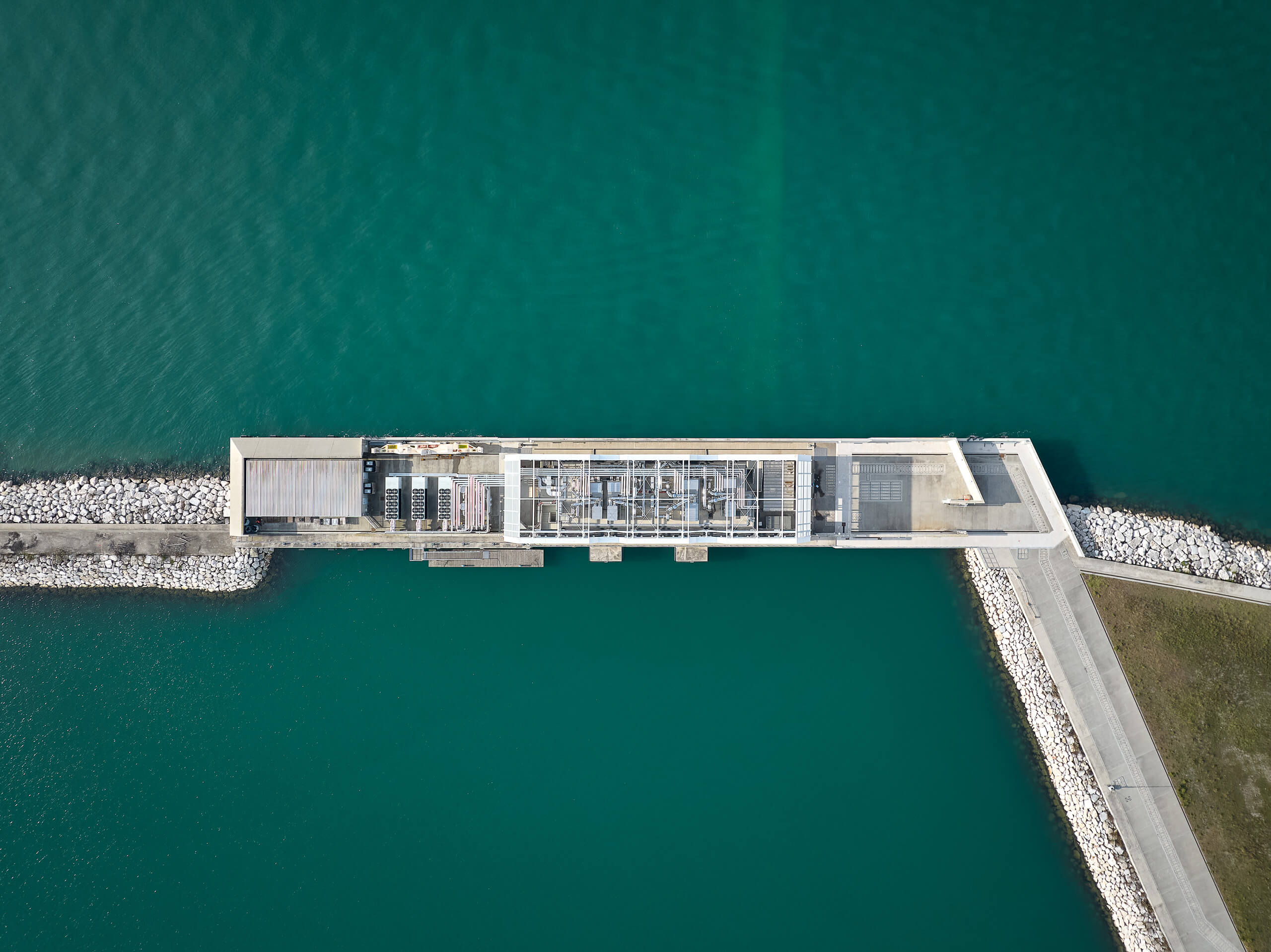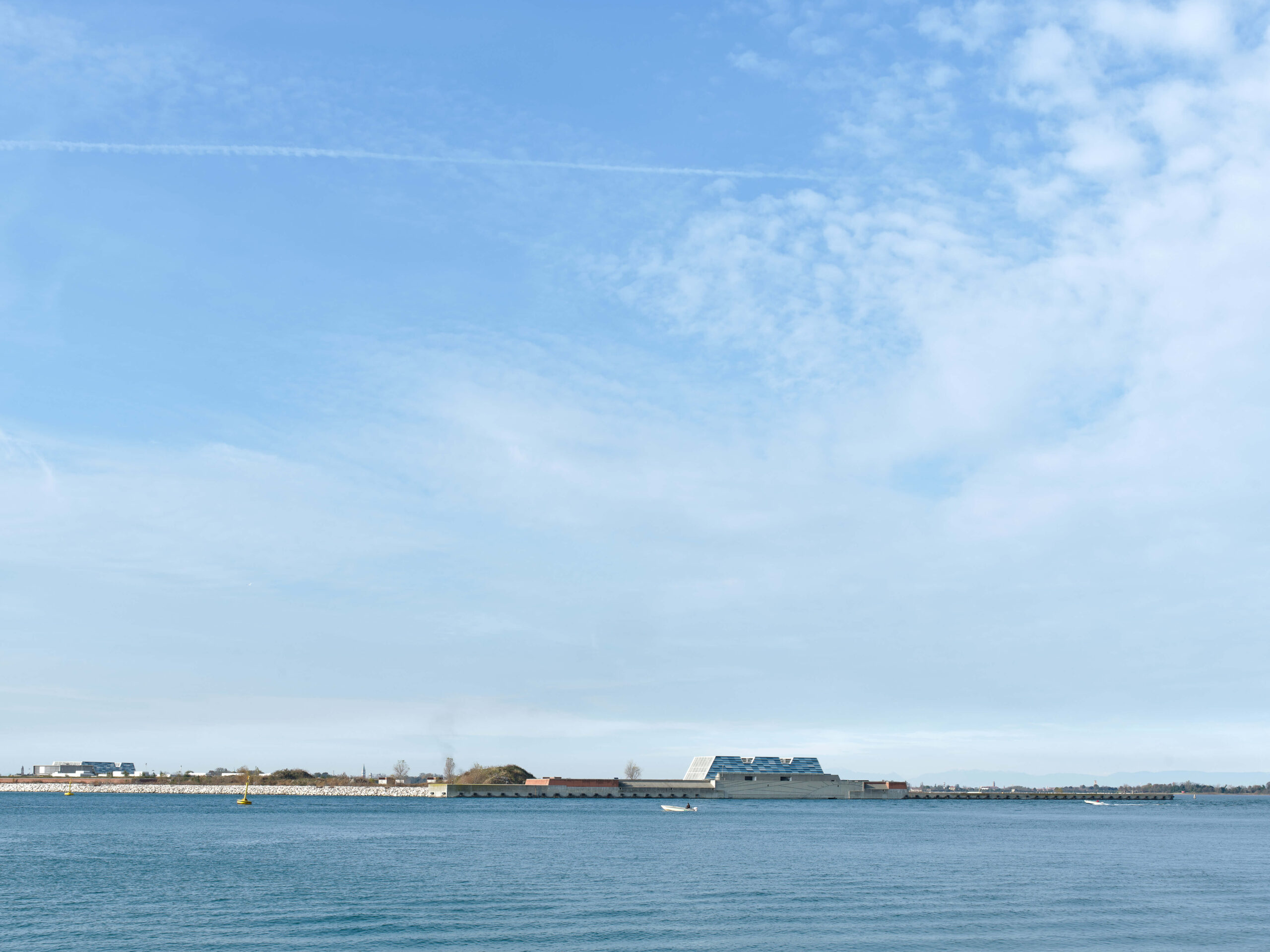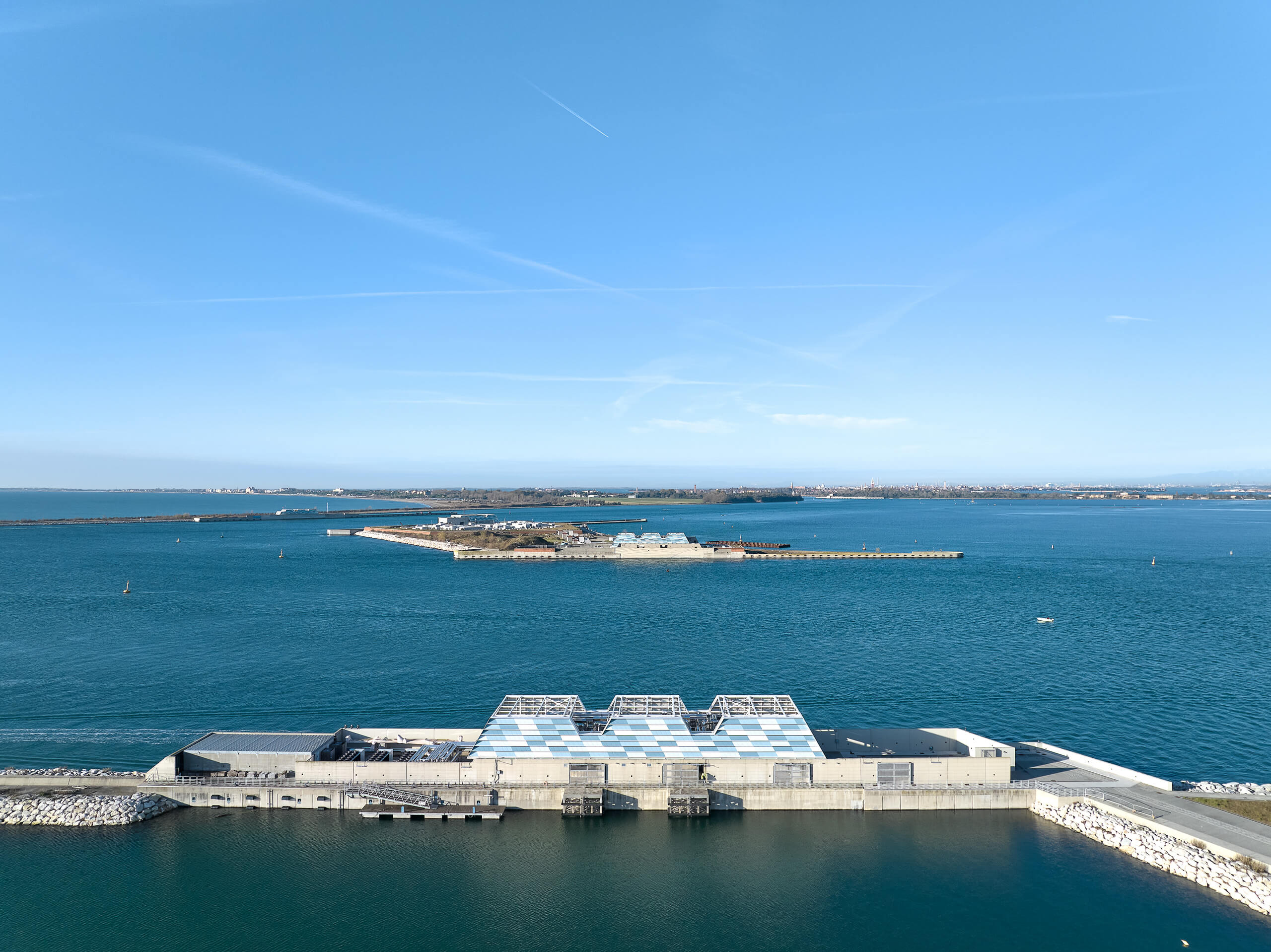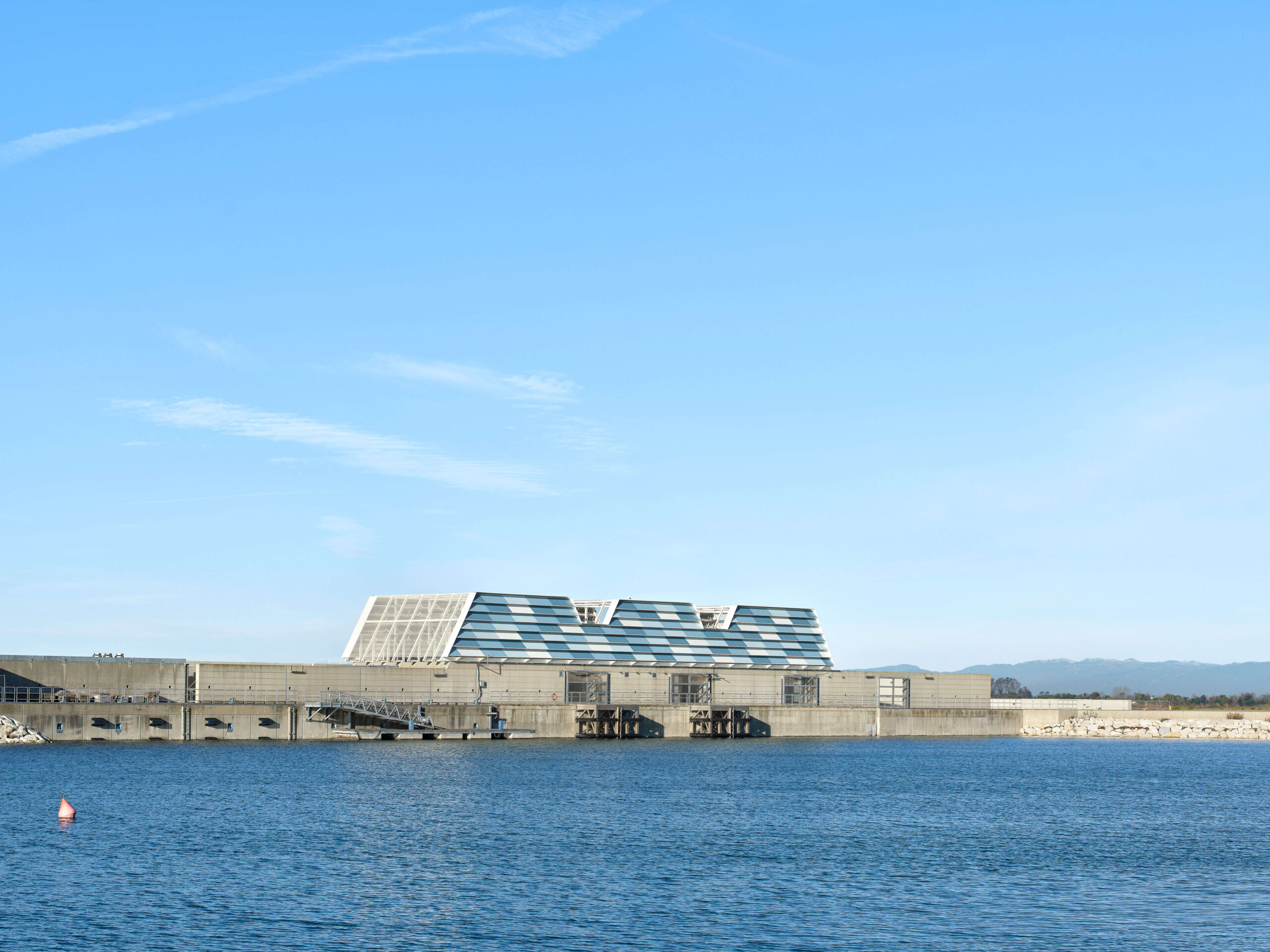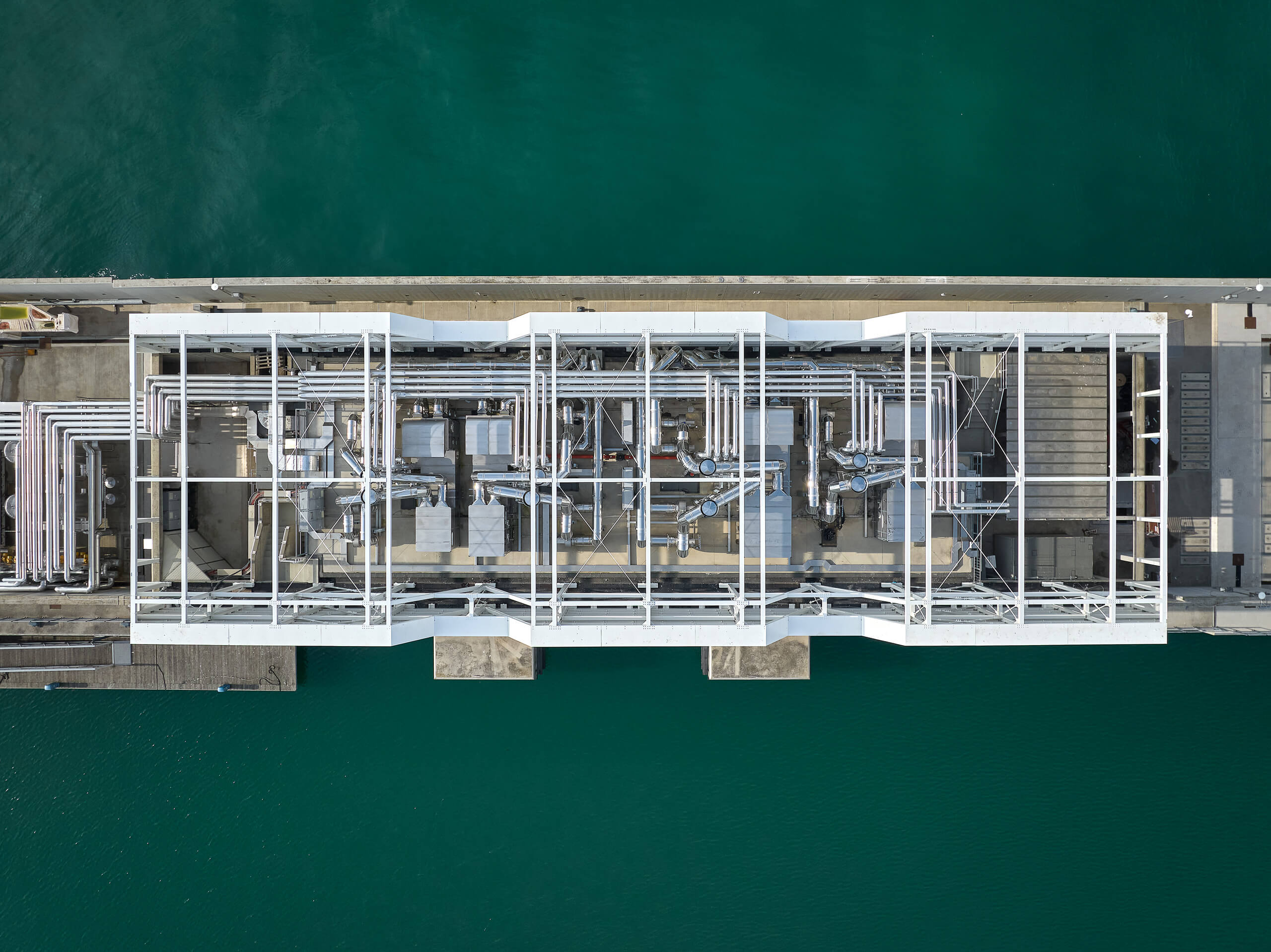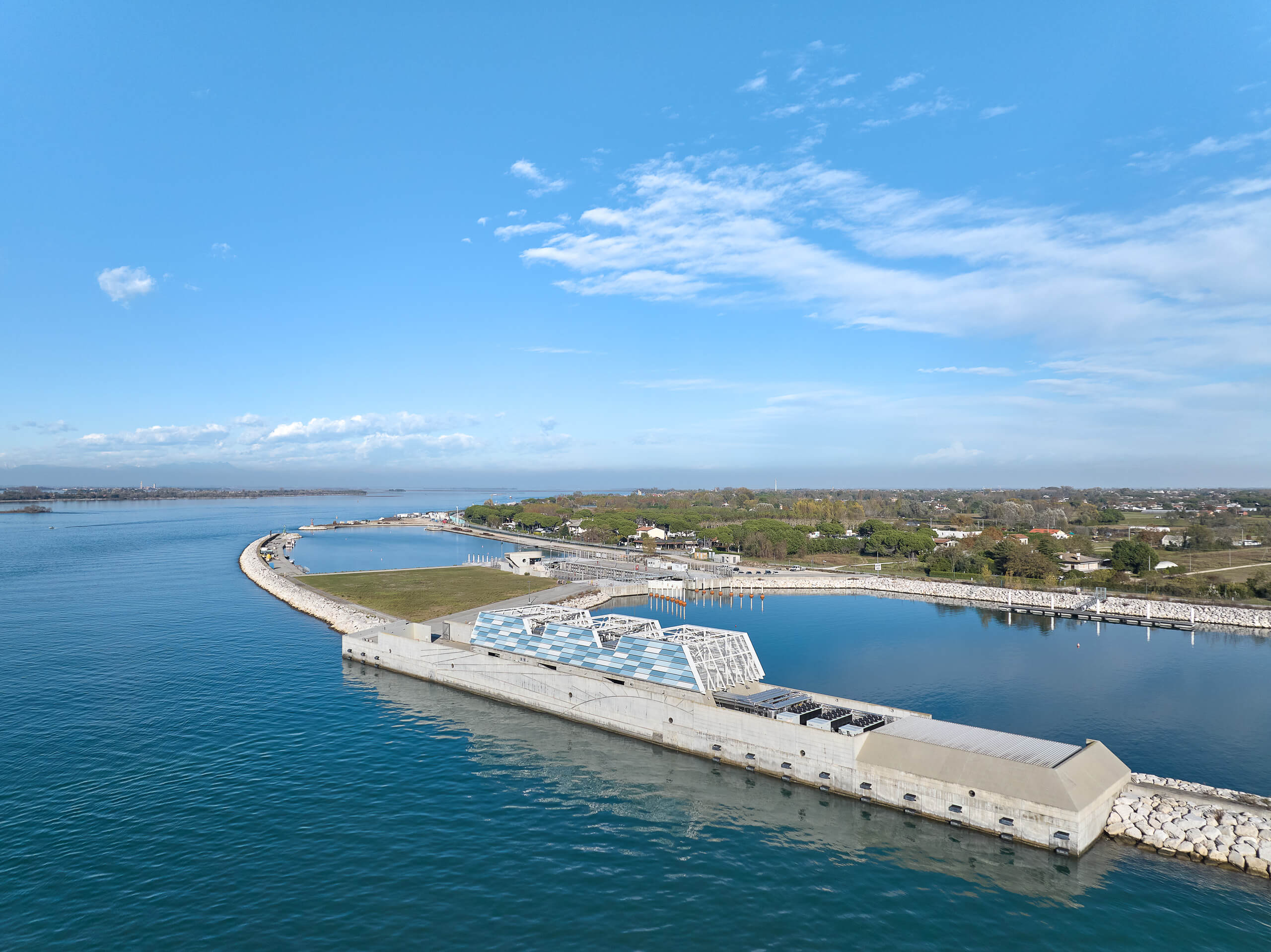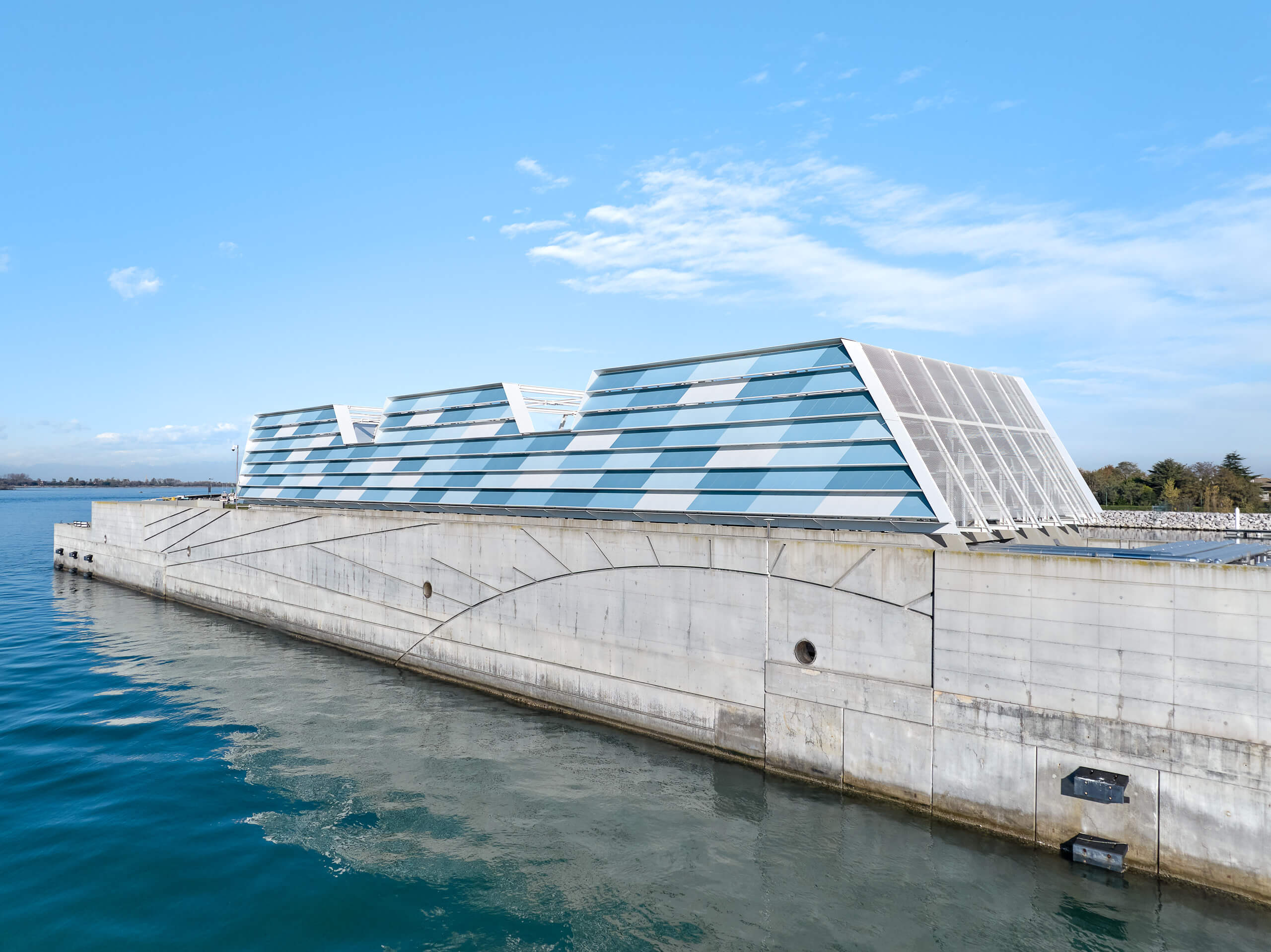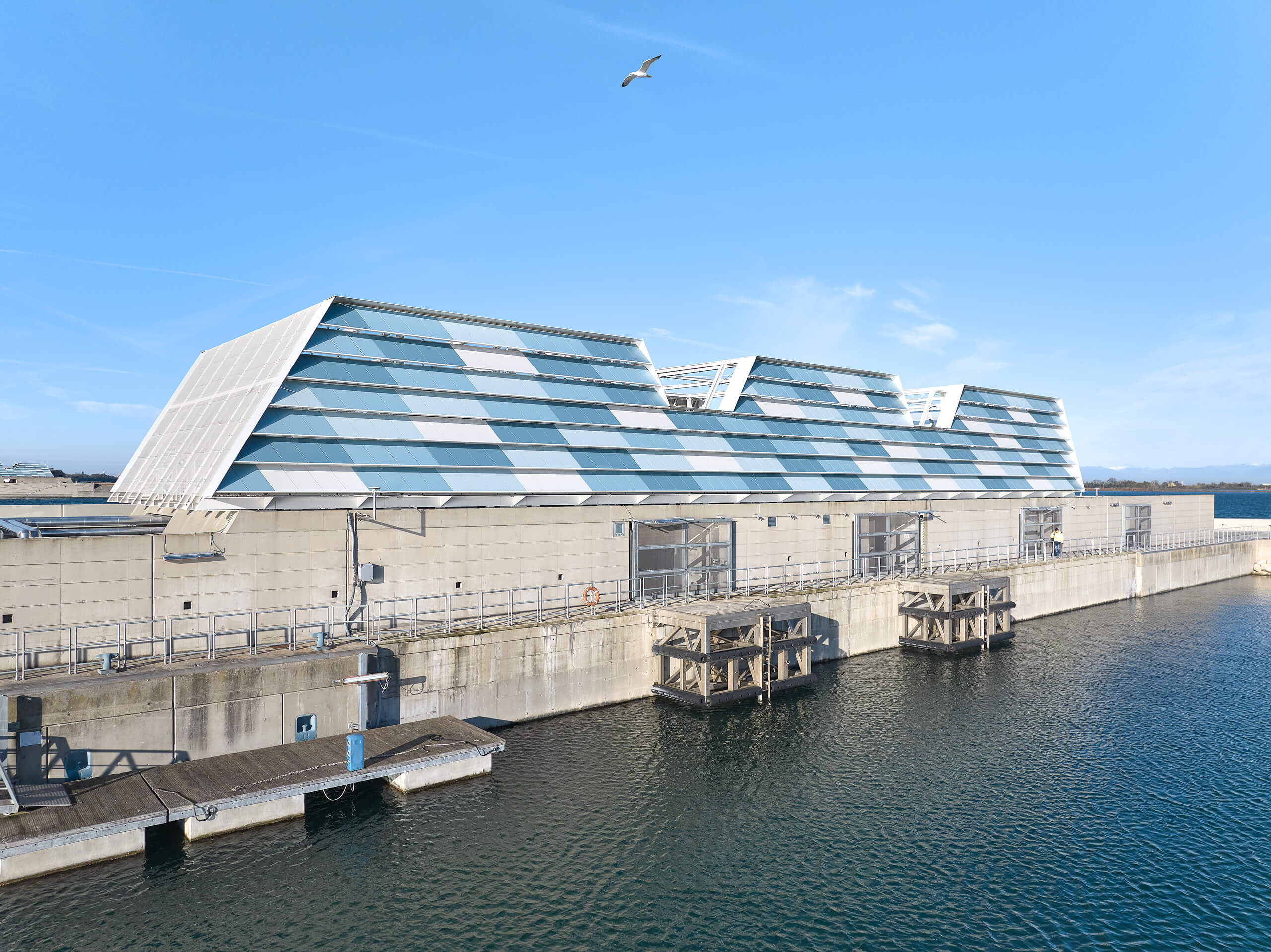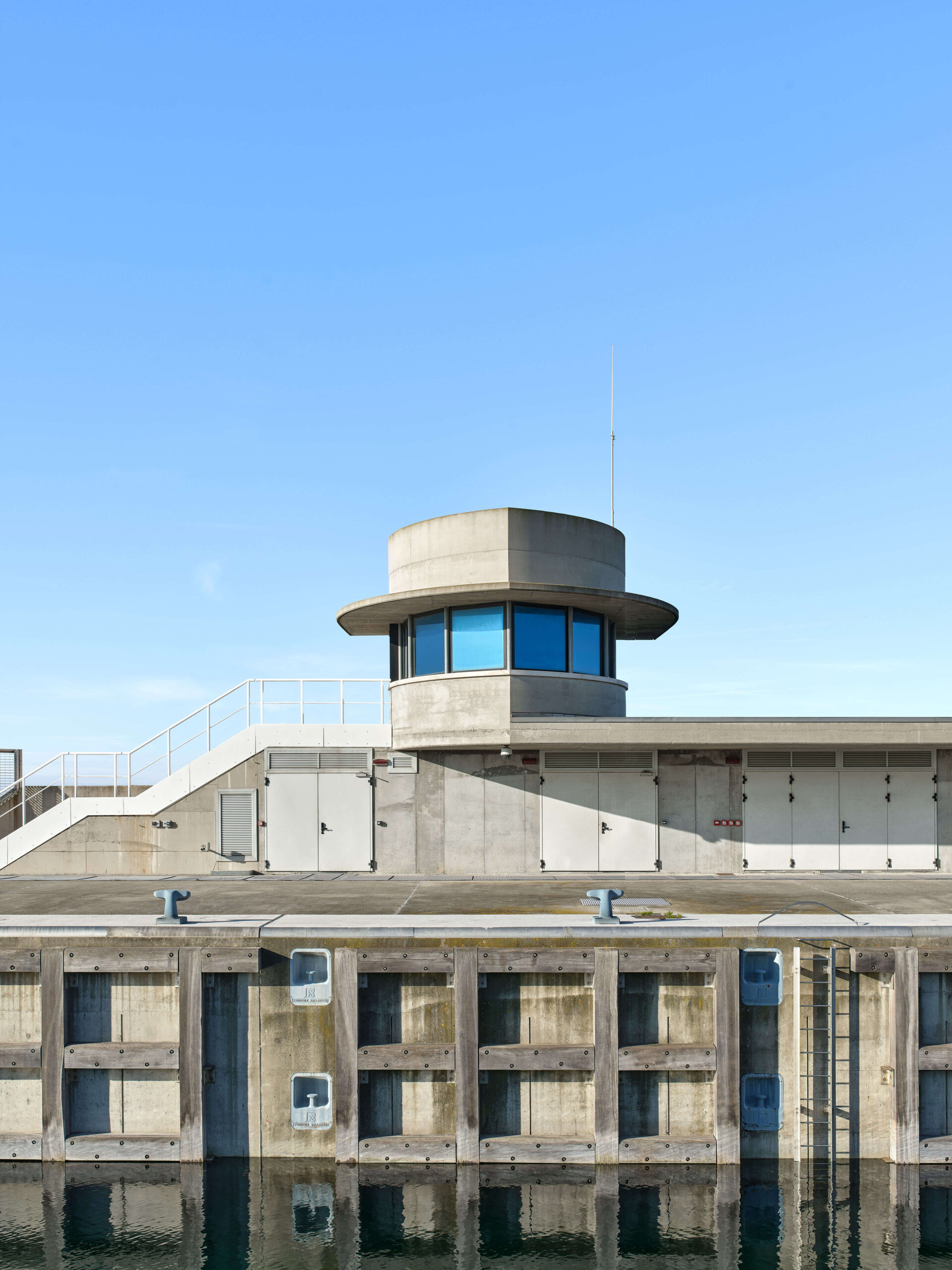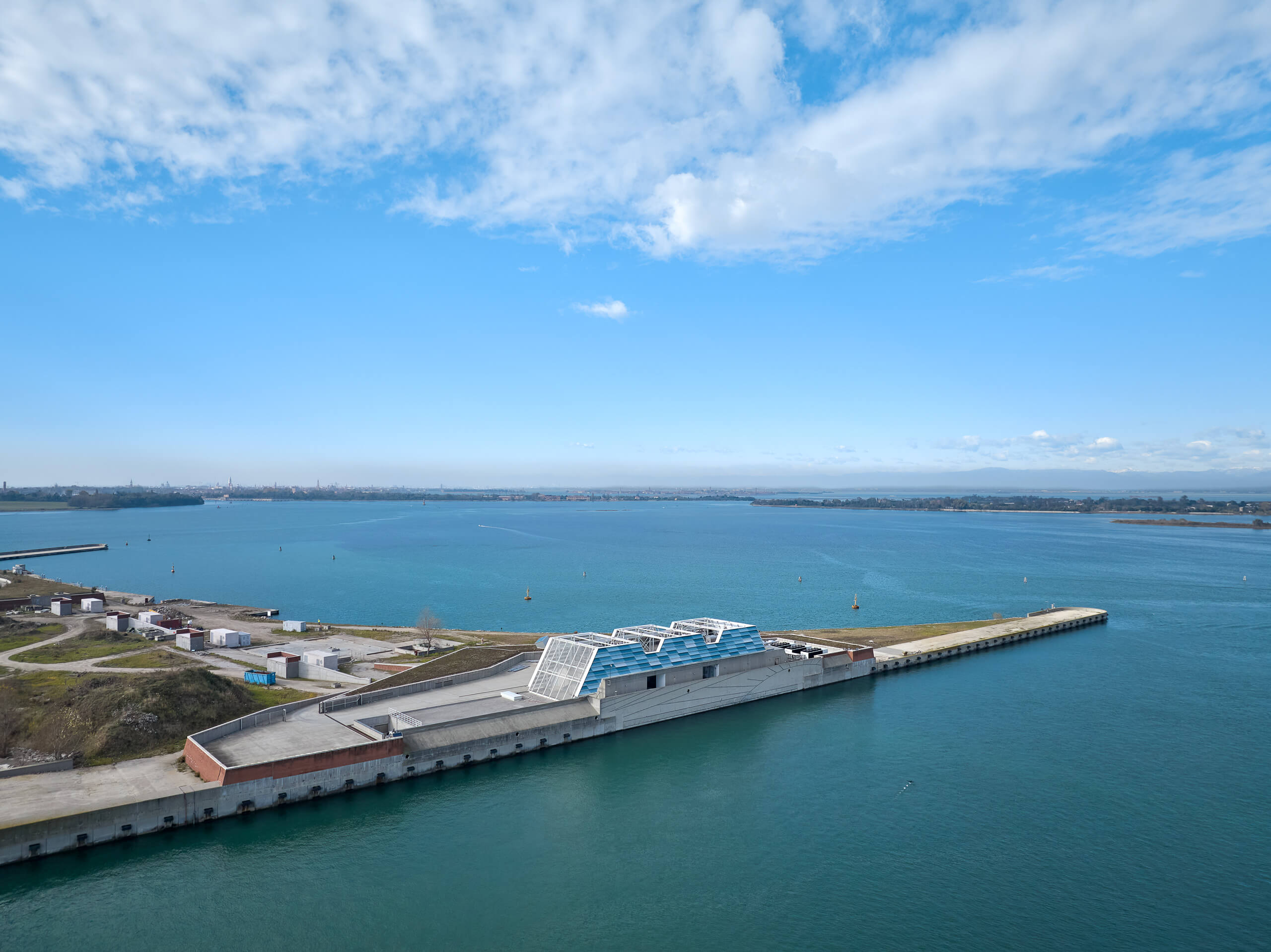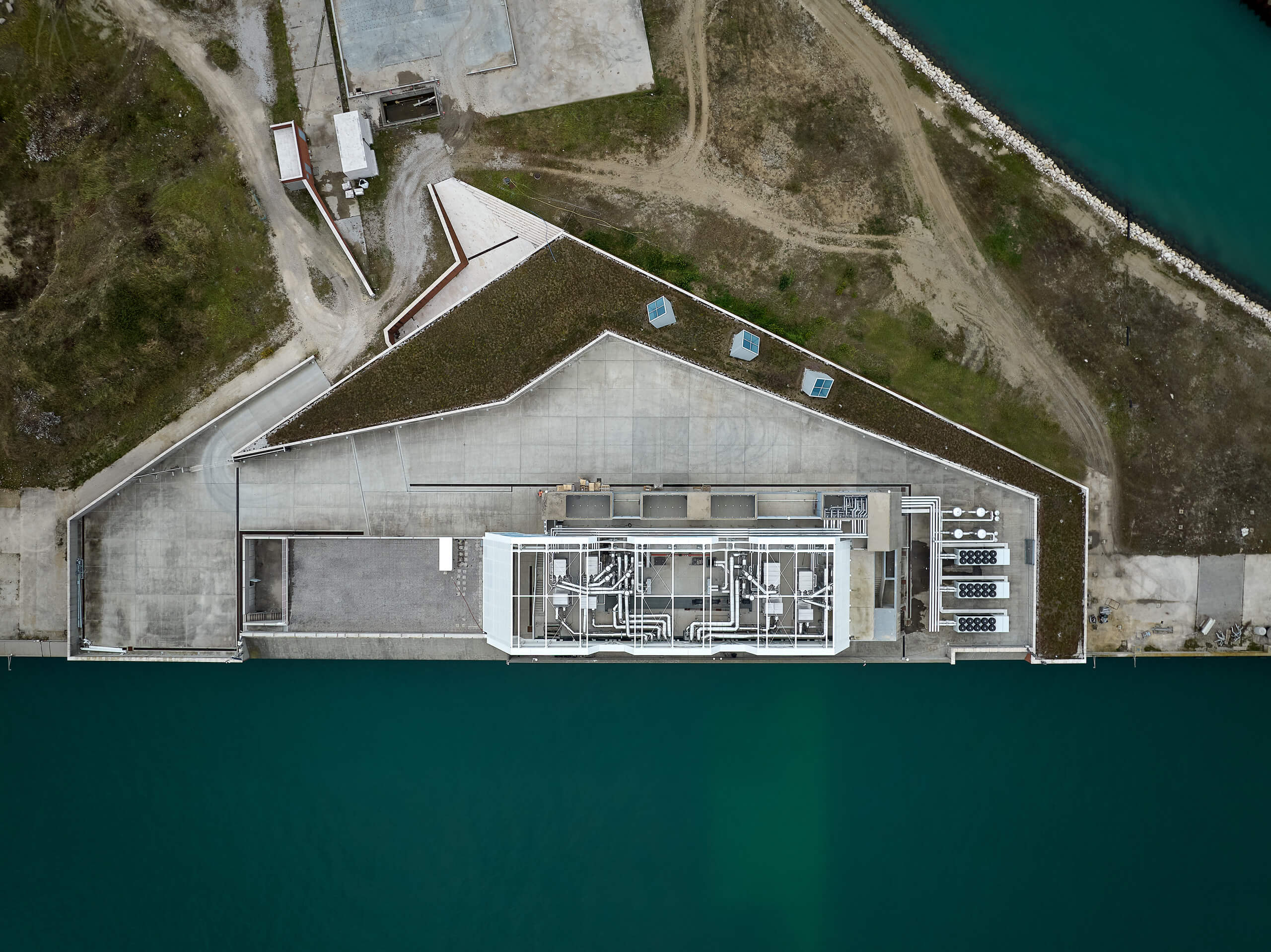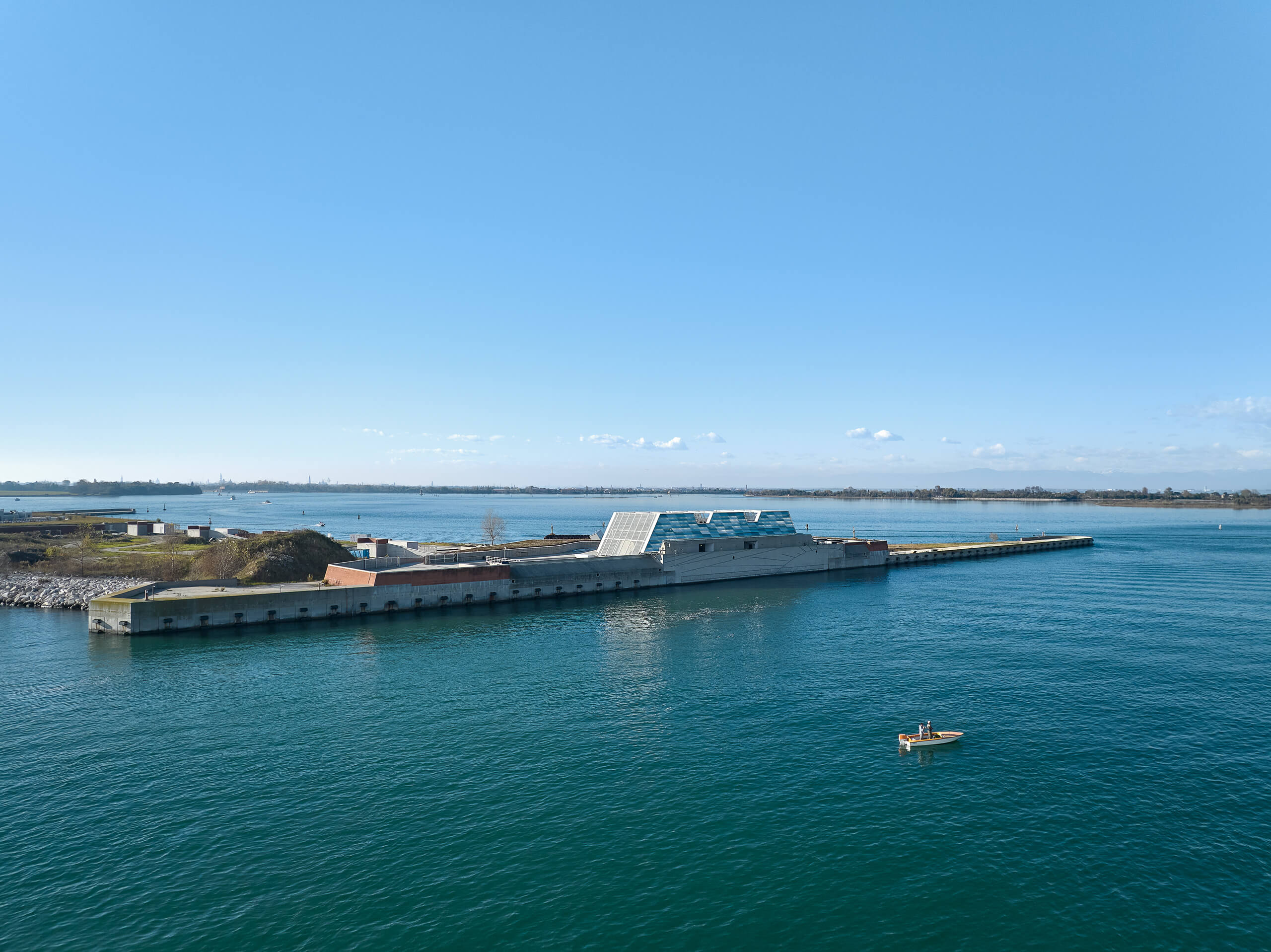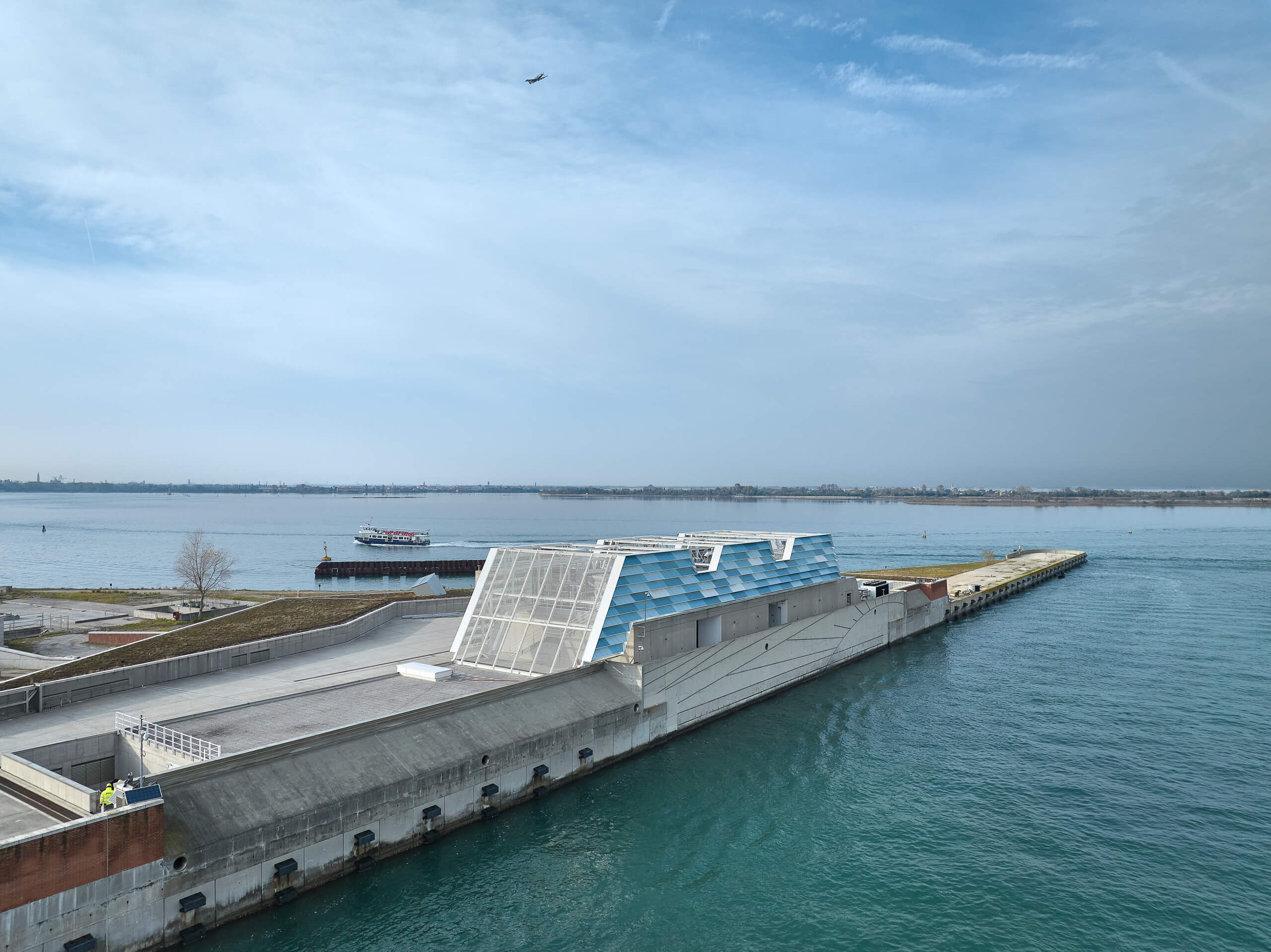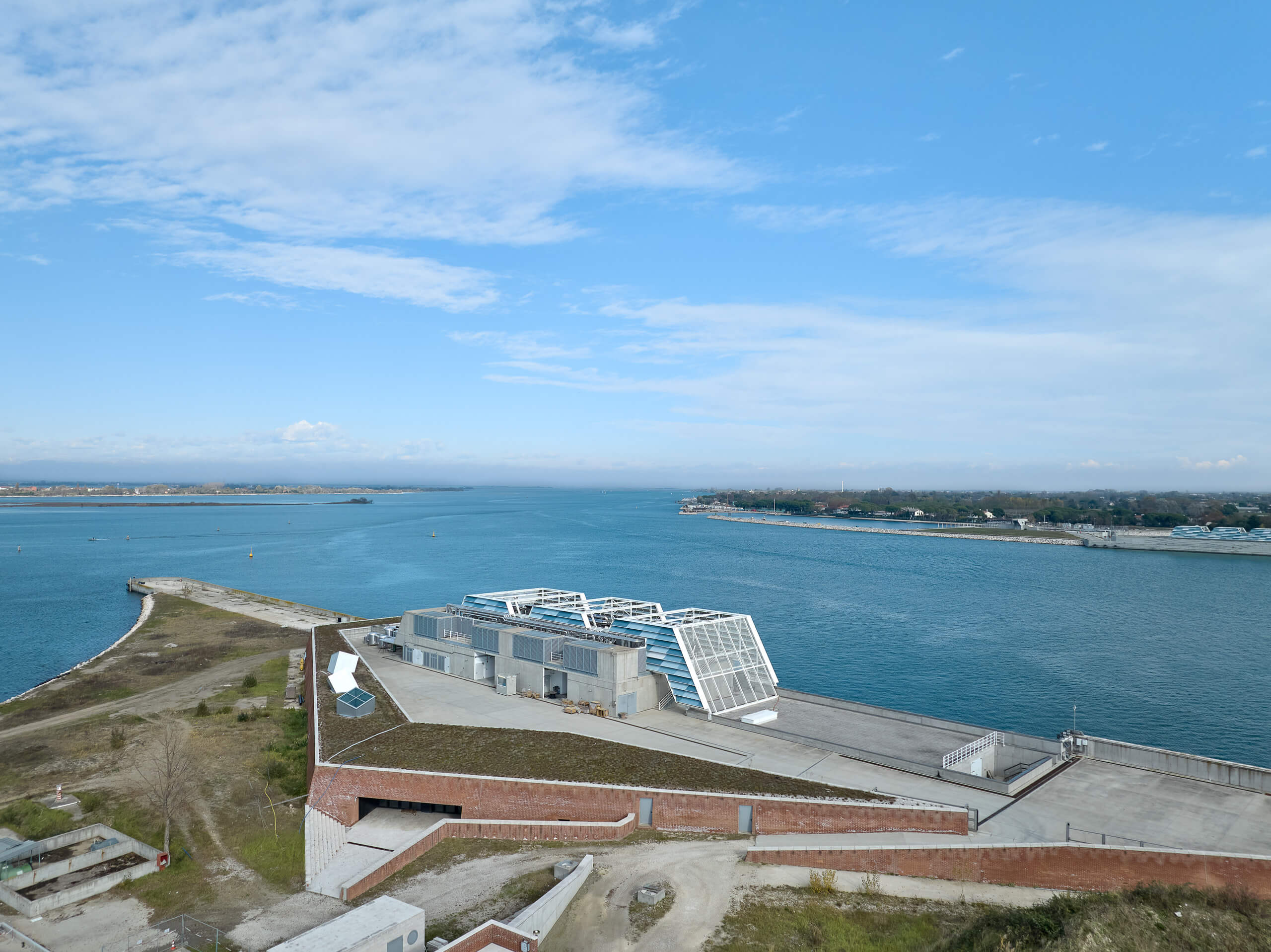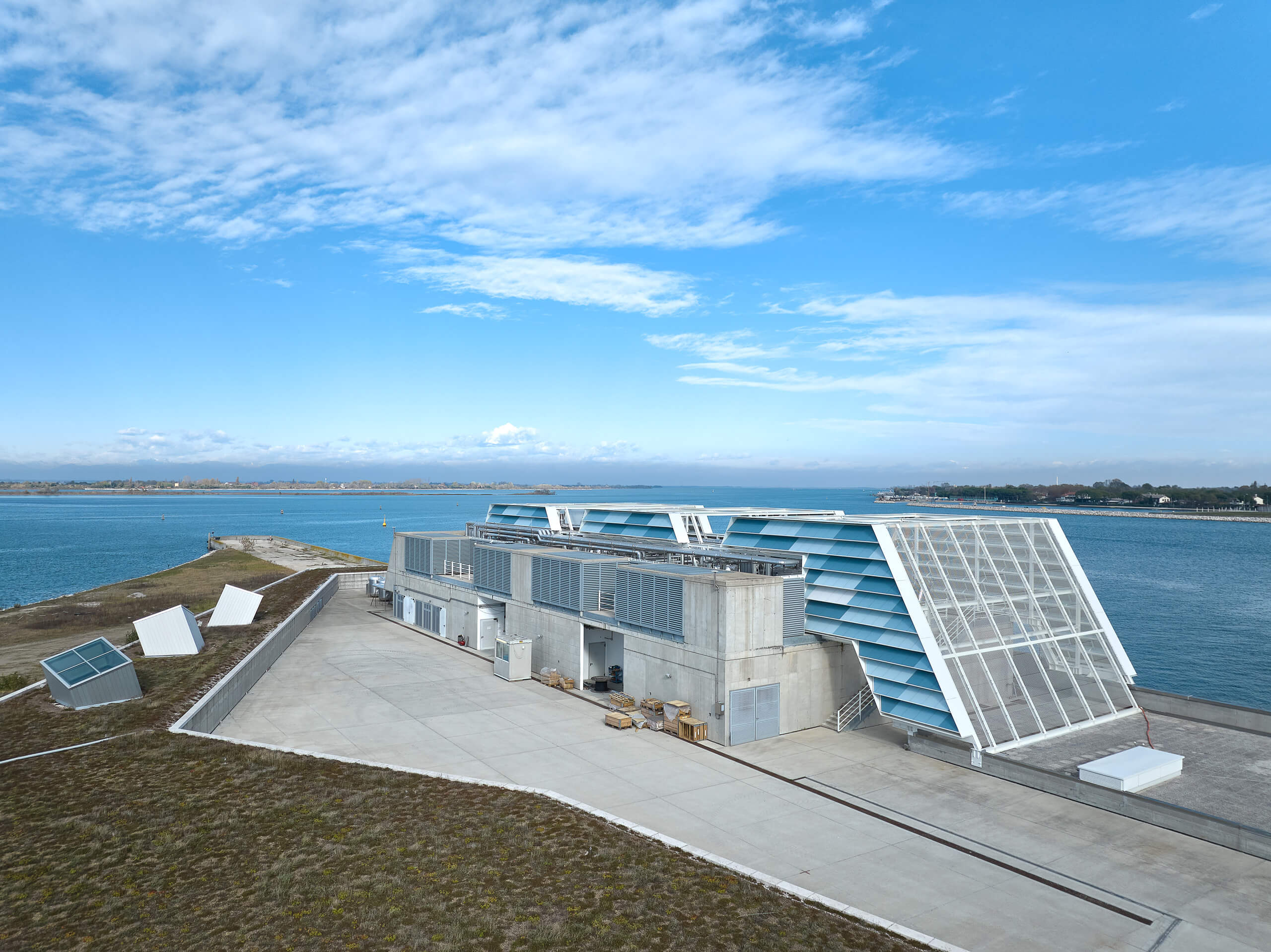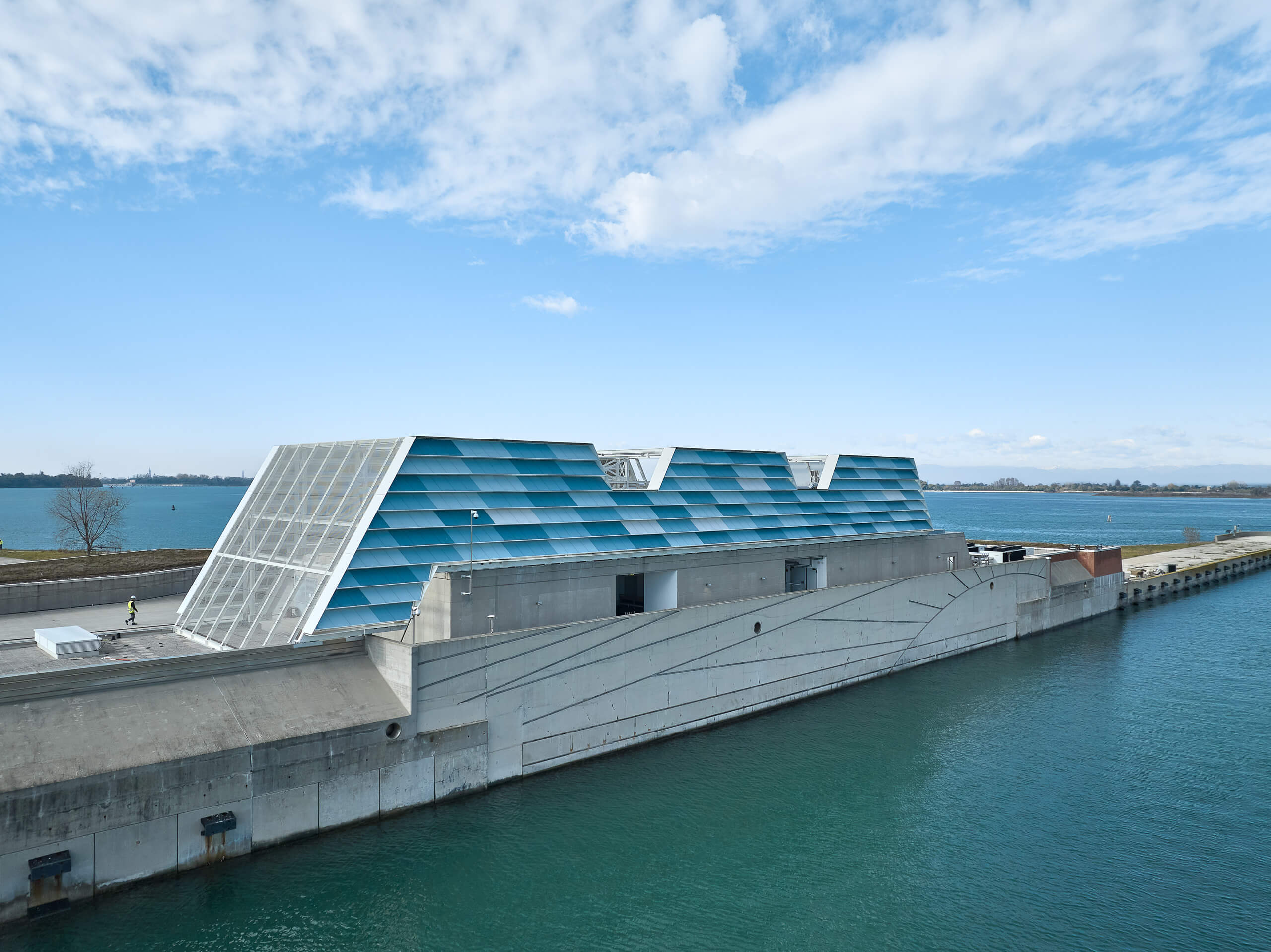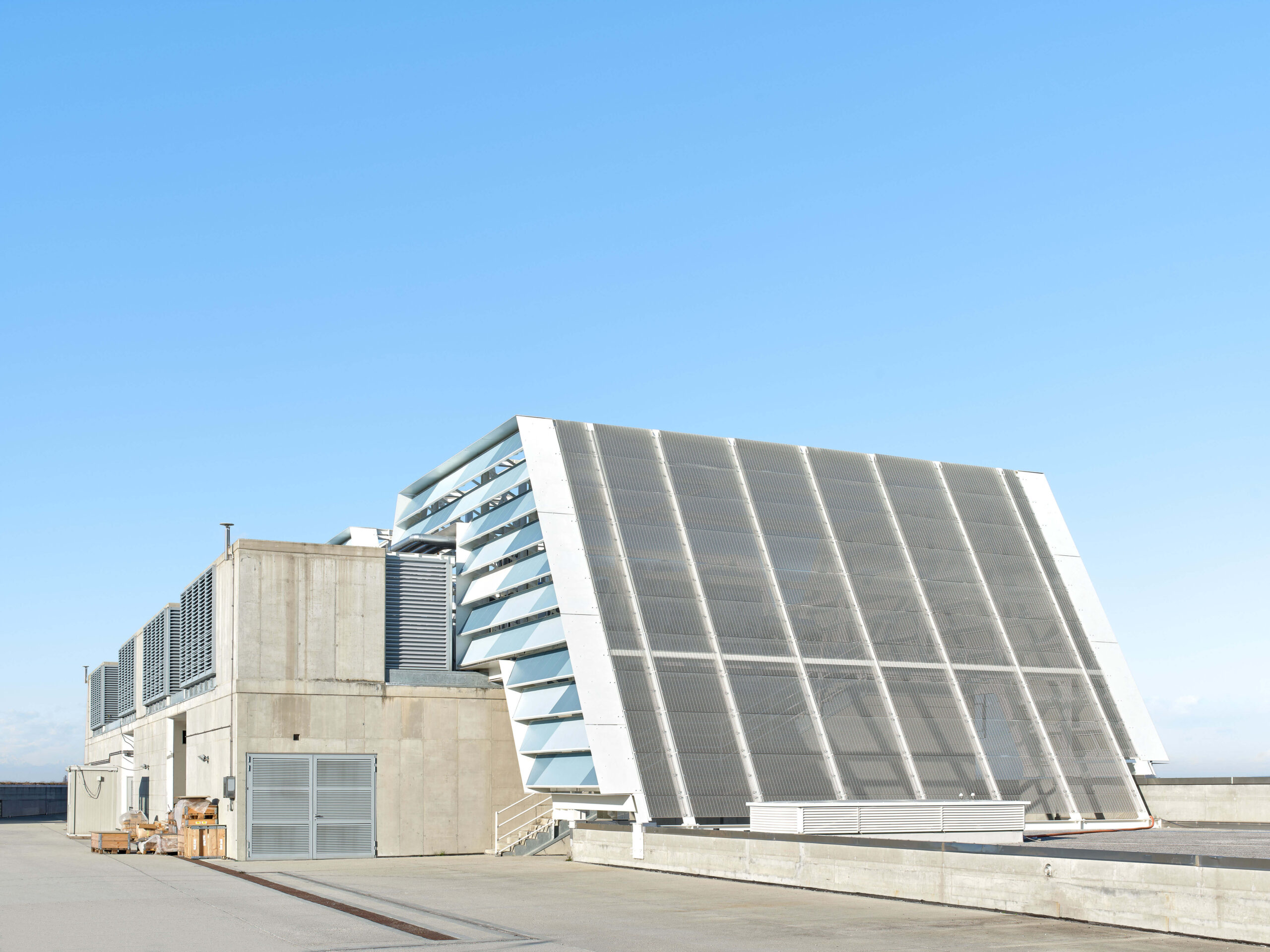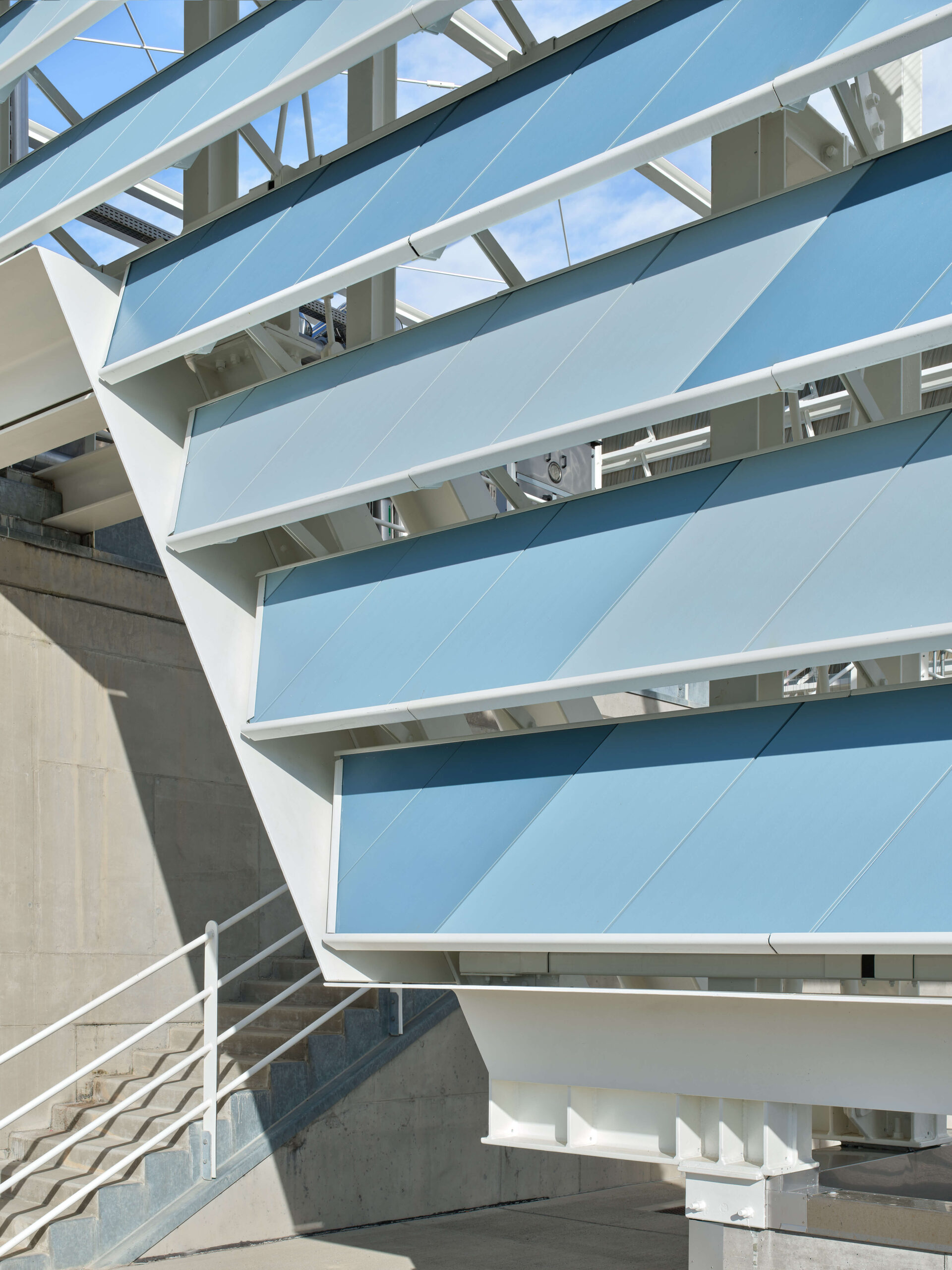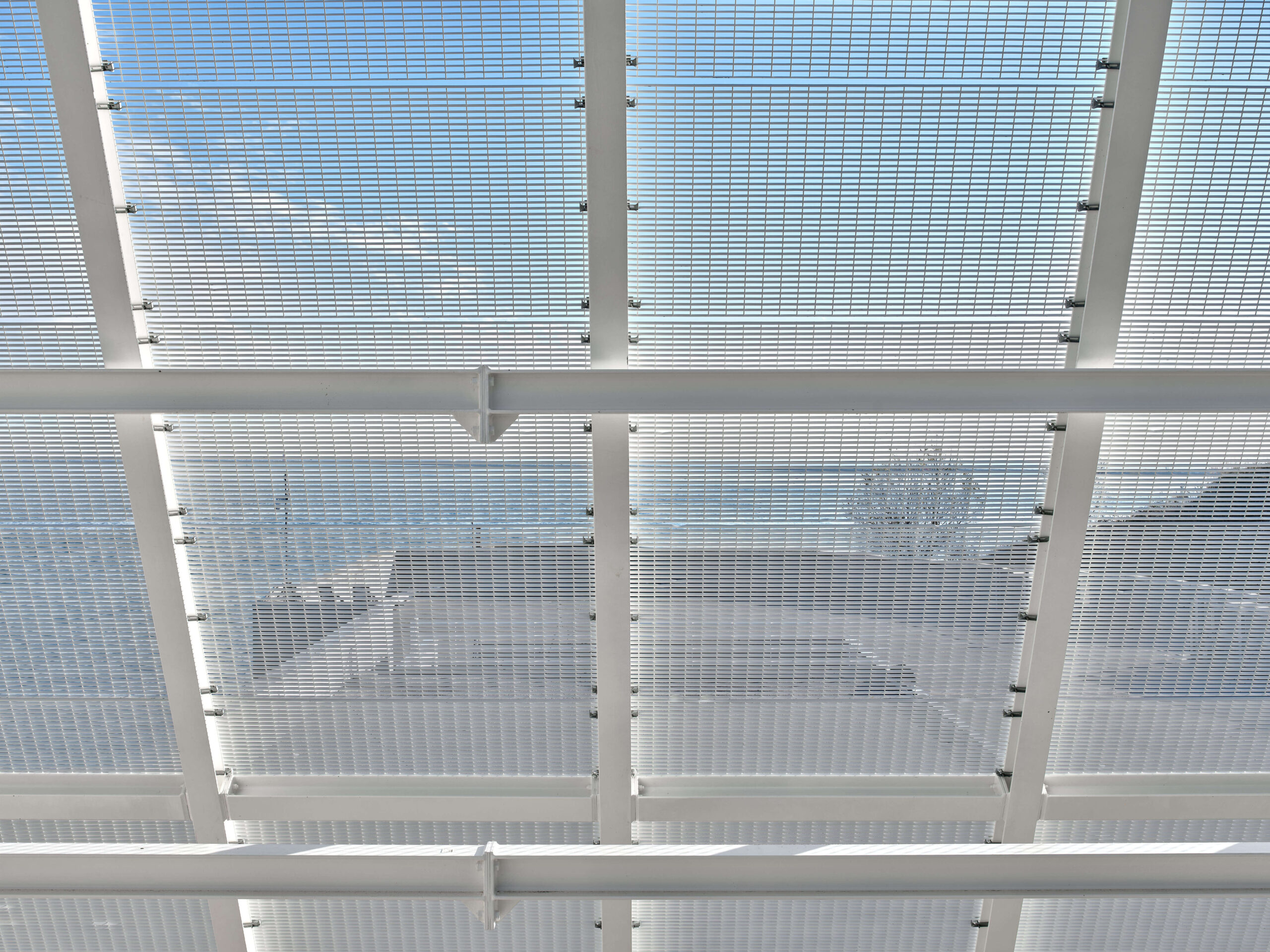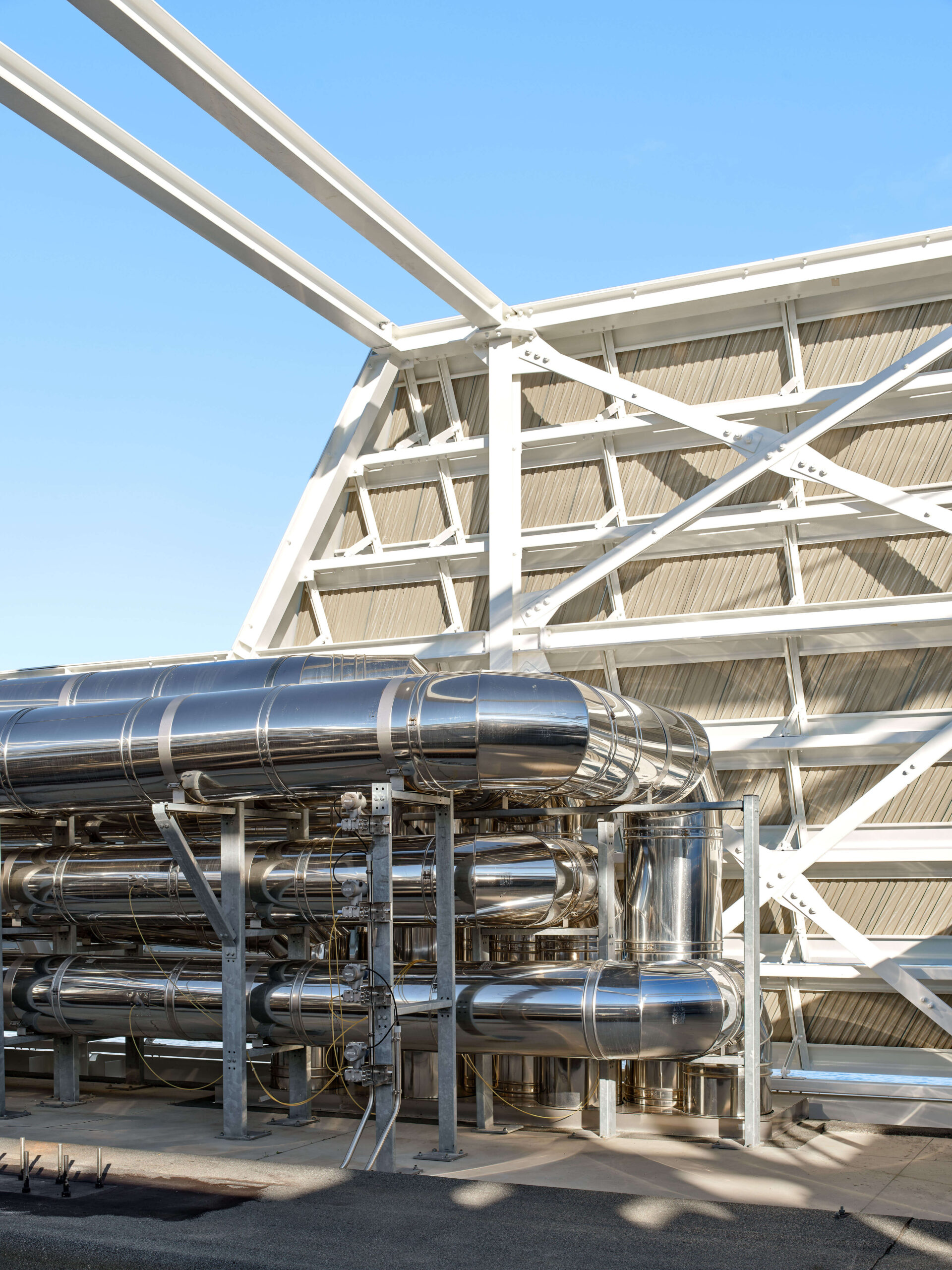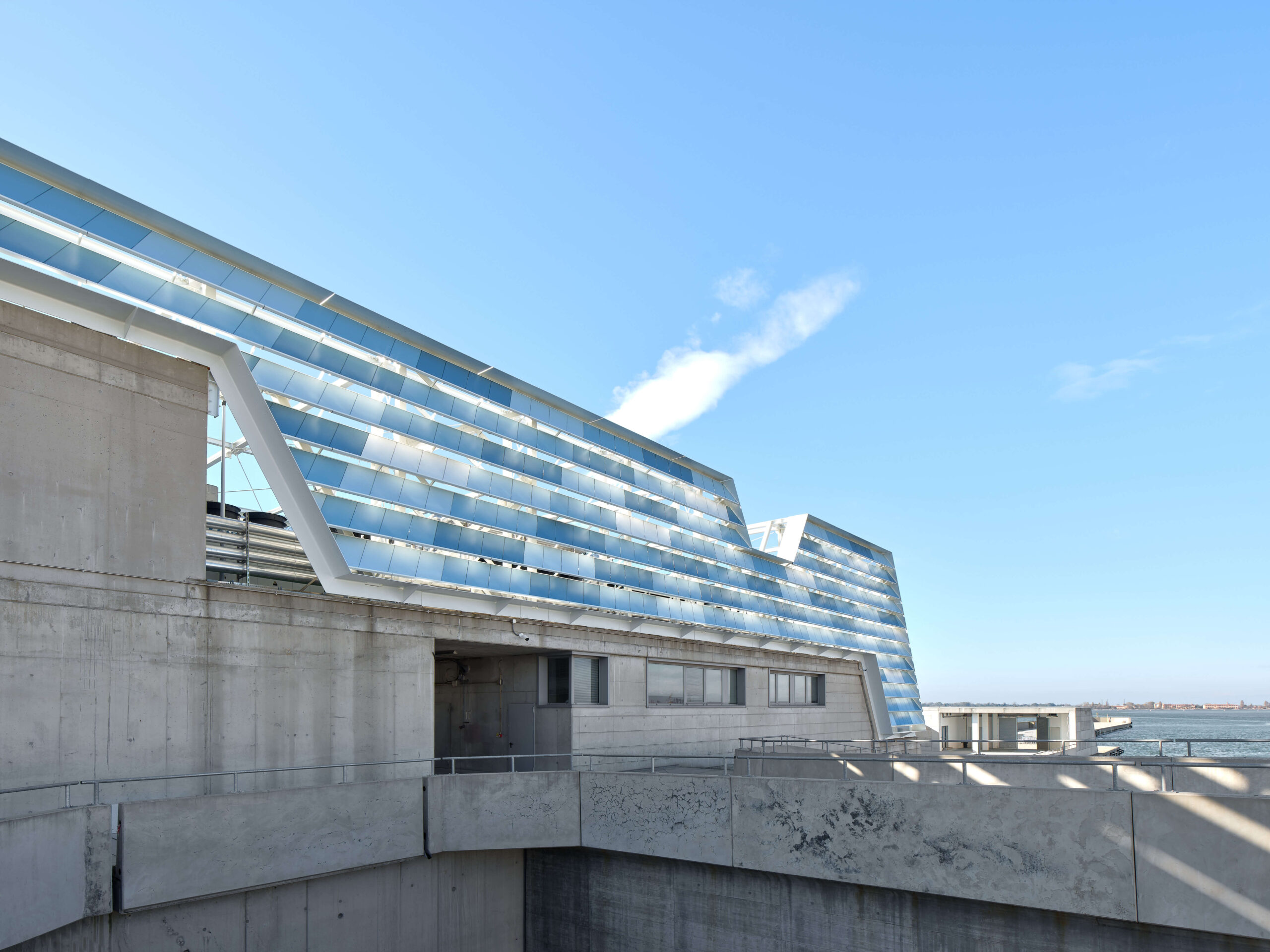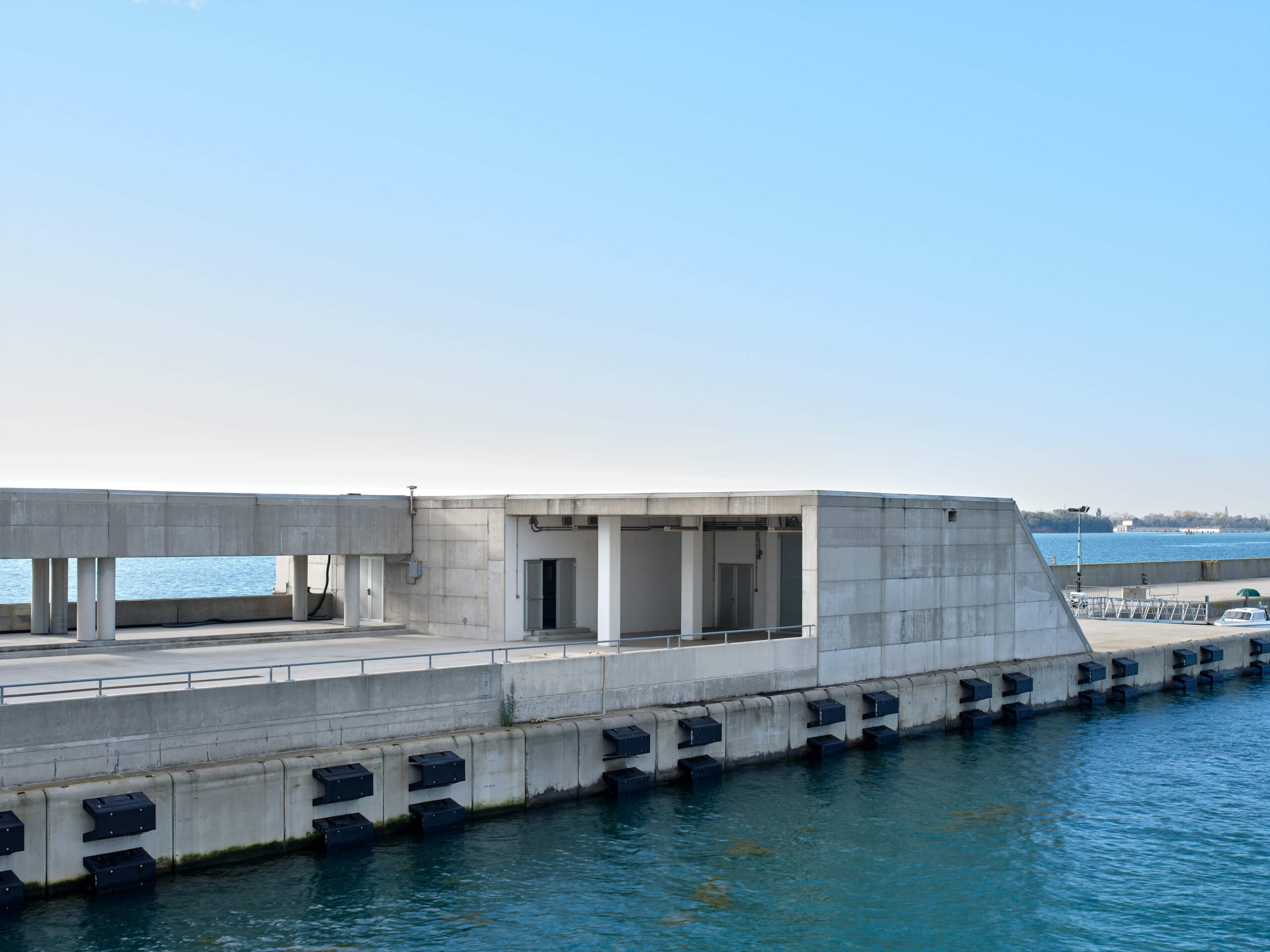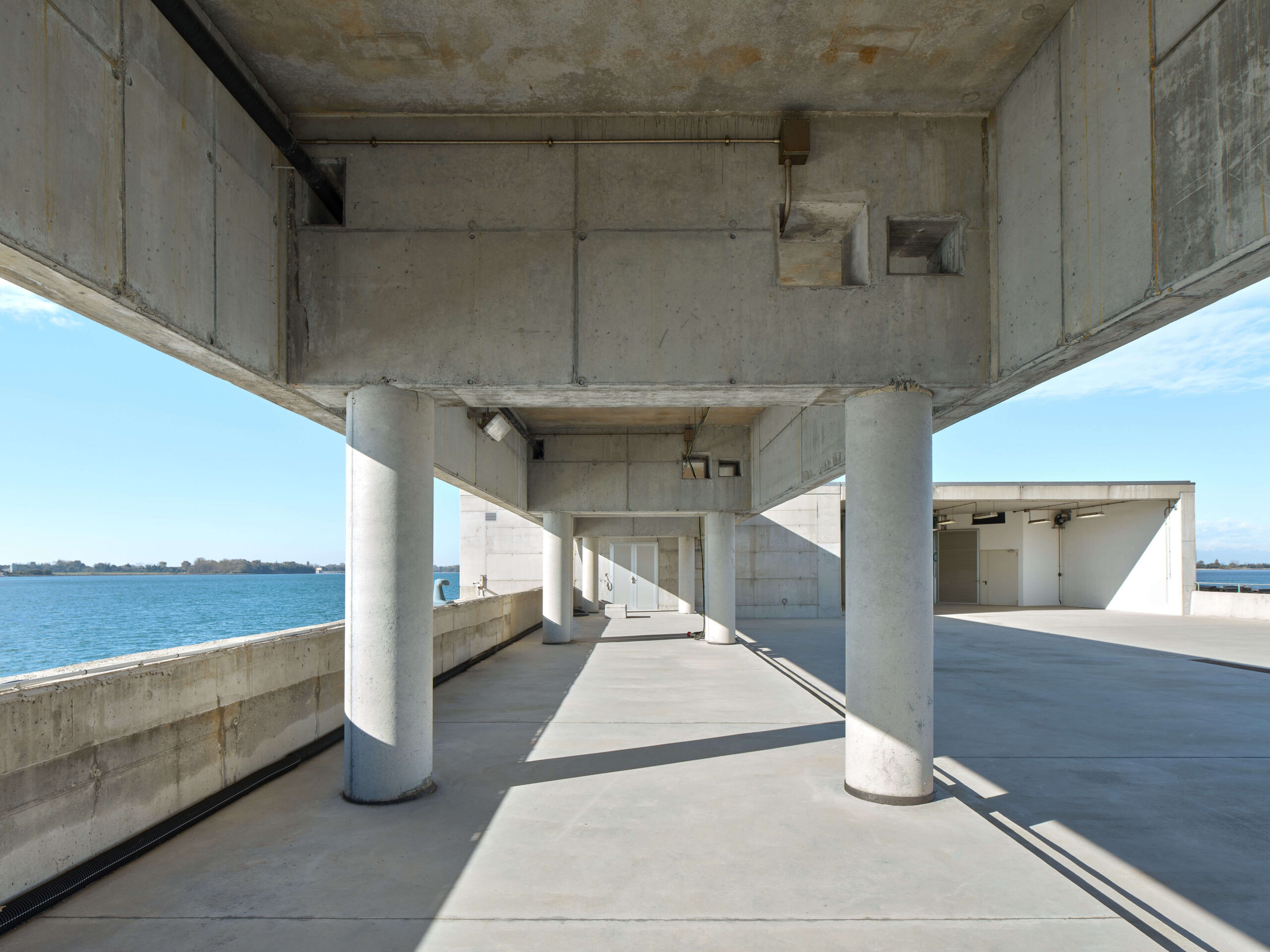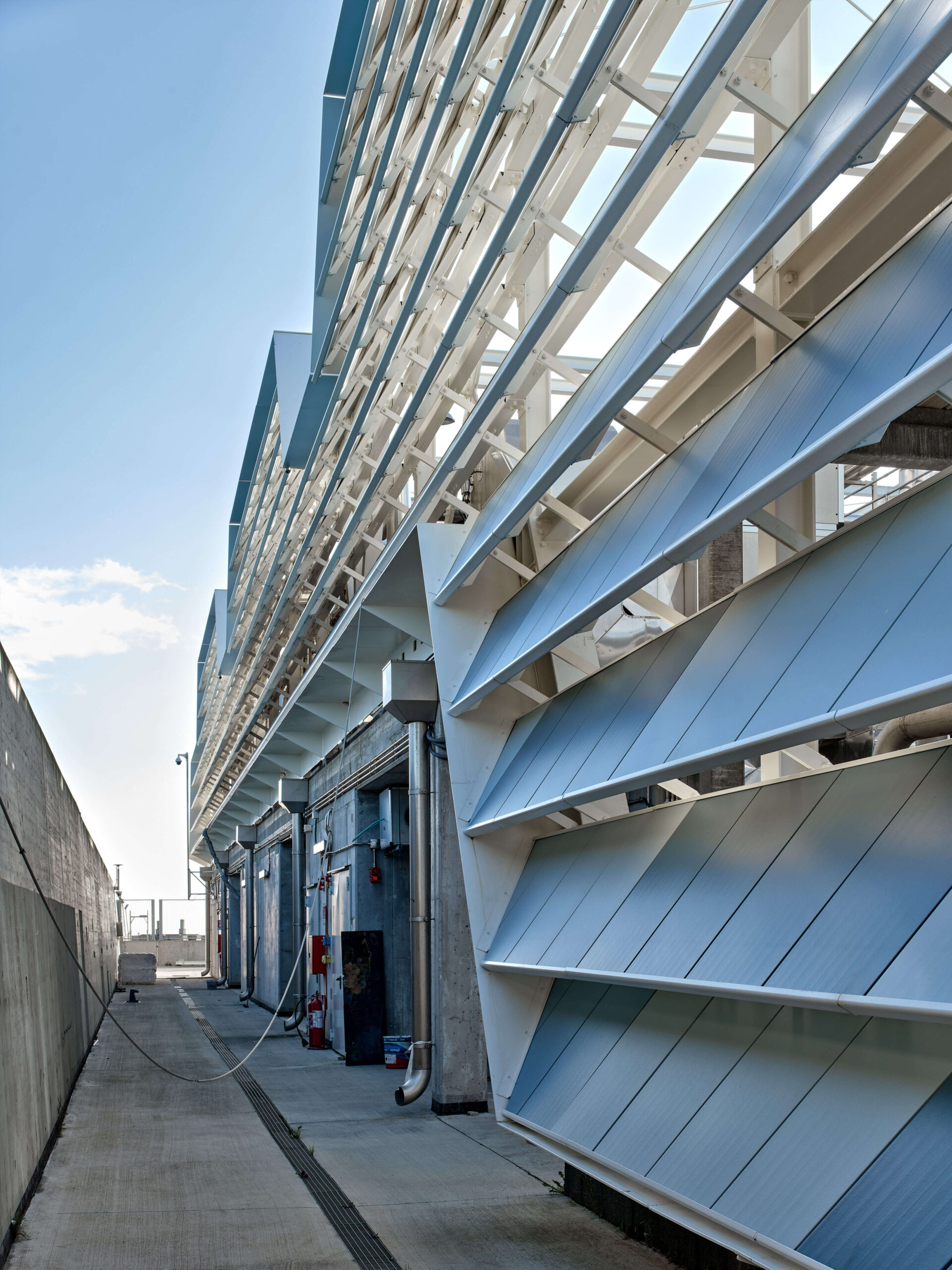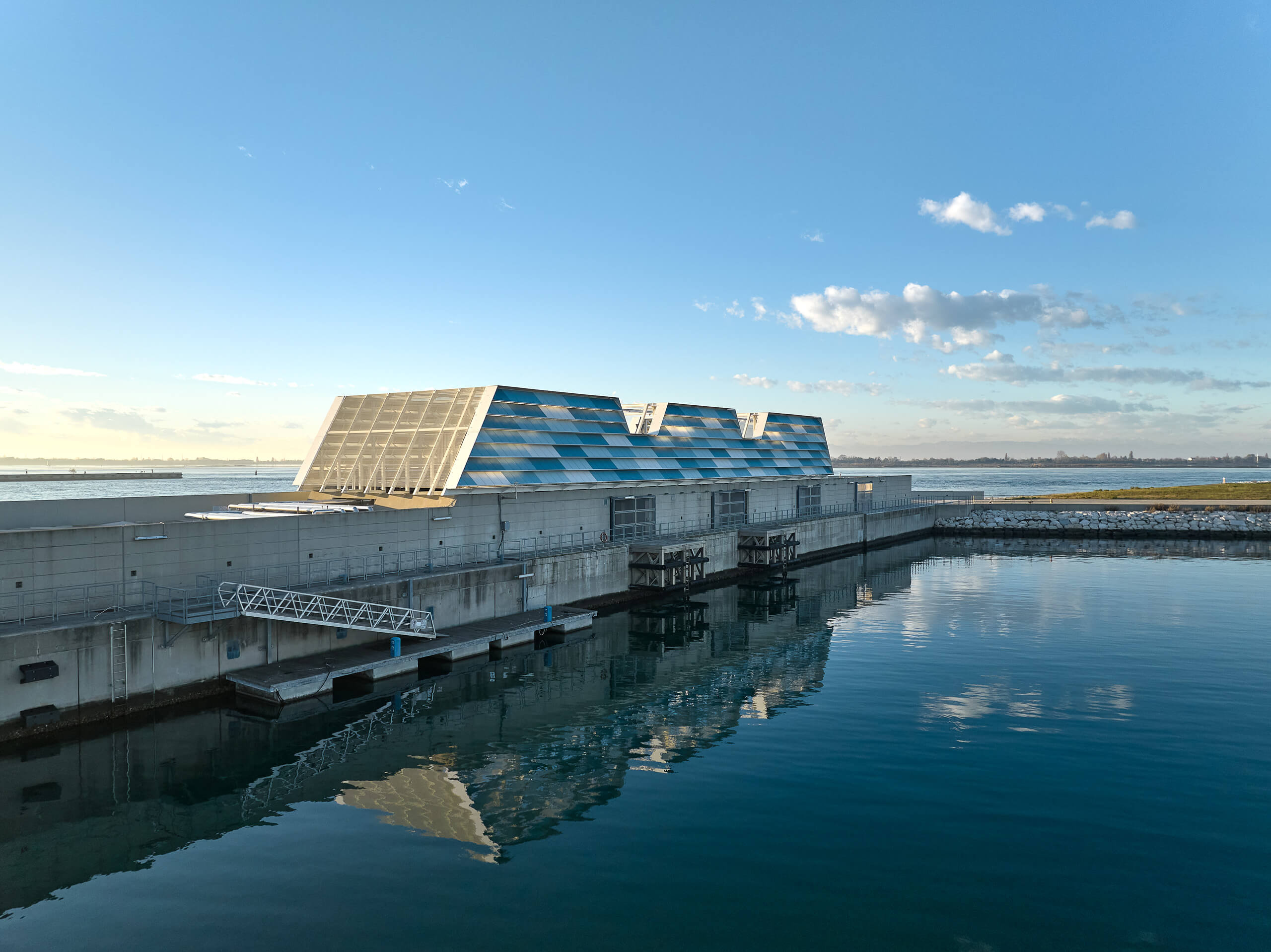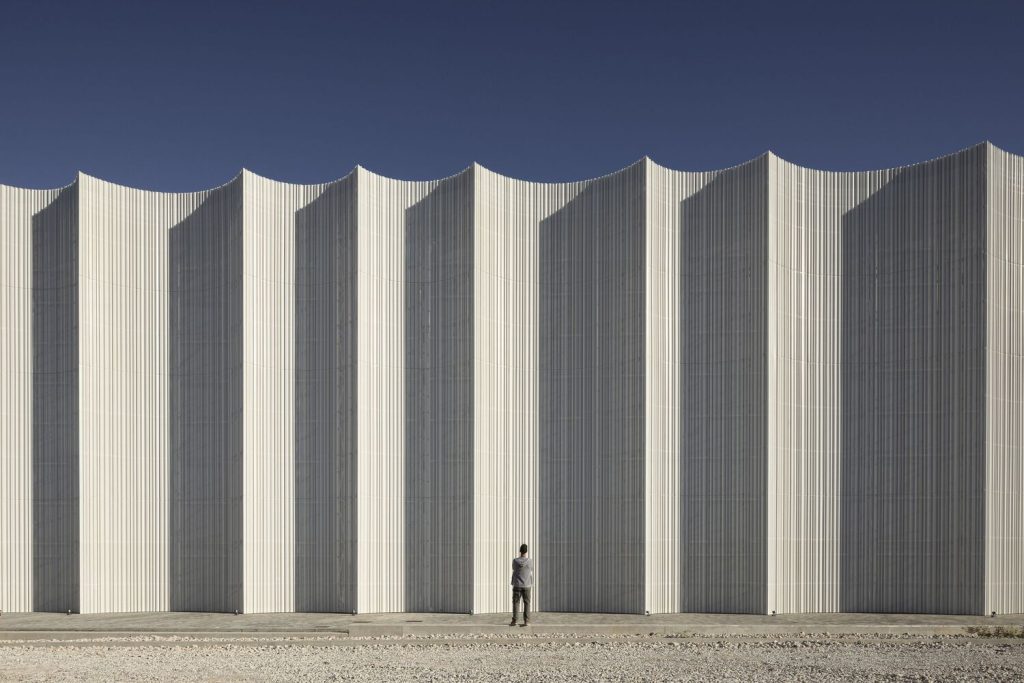
TARGET: ARCHITECTURAL AND LANDSCAPE INTEGRATION / MATE Engineering + THETIS
Launched in 2003 with the aim of protecting the city of Venice and its Lagoon, a Unesco heritage site since 1987, from the phenomenon of high water, and tested for the first time in 2020, the MOSE – an acronym for Modulo Sperimentale Elettromeccanico, i.e. Experimental Electromechanical Module – is a system of dams formed by four barriers, located at the Lido, Malamocco and Chioggia inlets, for a total of seventyeight independent mobile immersion floodgates, which can be activated in the event of exceptional tides.
Given the need to integrate the MOSE – considered an important intervention program, although not on its own a solution to Venice’s problems, especially in view of the forthcoming climate changes with the relative rise of the seas and the different levels of the city’s pavement – with a series of complementary works, the need immediately emerged to make this colossal project coincide not only with safeguarding the lagoon environment and ecosystem, but also with an opportunity to enhance the territory.


For this reason, the Istituto Universitario di Architettura di Venezia IUAV was commissioned in the preliminary phase by the Venice Water Authority, on the recommendation of the Ministry for Cultural and Environmental Heritage expressed in the Safeguarding Commission, to develop a project to identify the most suitable solution to safeguarding against high waters, whose guidelines can be summarized as the need to maintain the morphology and perception of the area unchanged, the enhancement of the environmental, landscape and historical complexity of the coastline and the improvement of its functionality.
The recent completion of the architectural masking structures for the four barriers of the Lido inlets, carried out by MATE Engineering for the architectural part and THETIS for the structural one, commissioned by the Ministry of Infrastructures and Transport. Provveditorato Interregionale per le Opere Pubbliche per il Veneto, Trentino Alto Adige e Friuli Venezia Giulia and featured here through the extraordinary photographic shots of Federico Covre is part of this constantly evolving path.
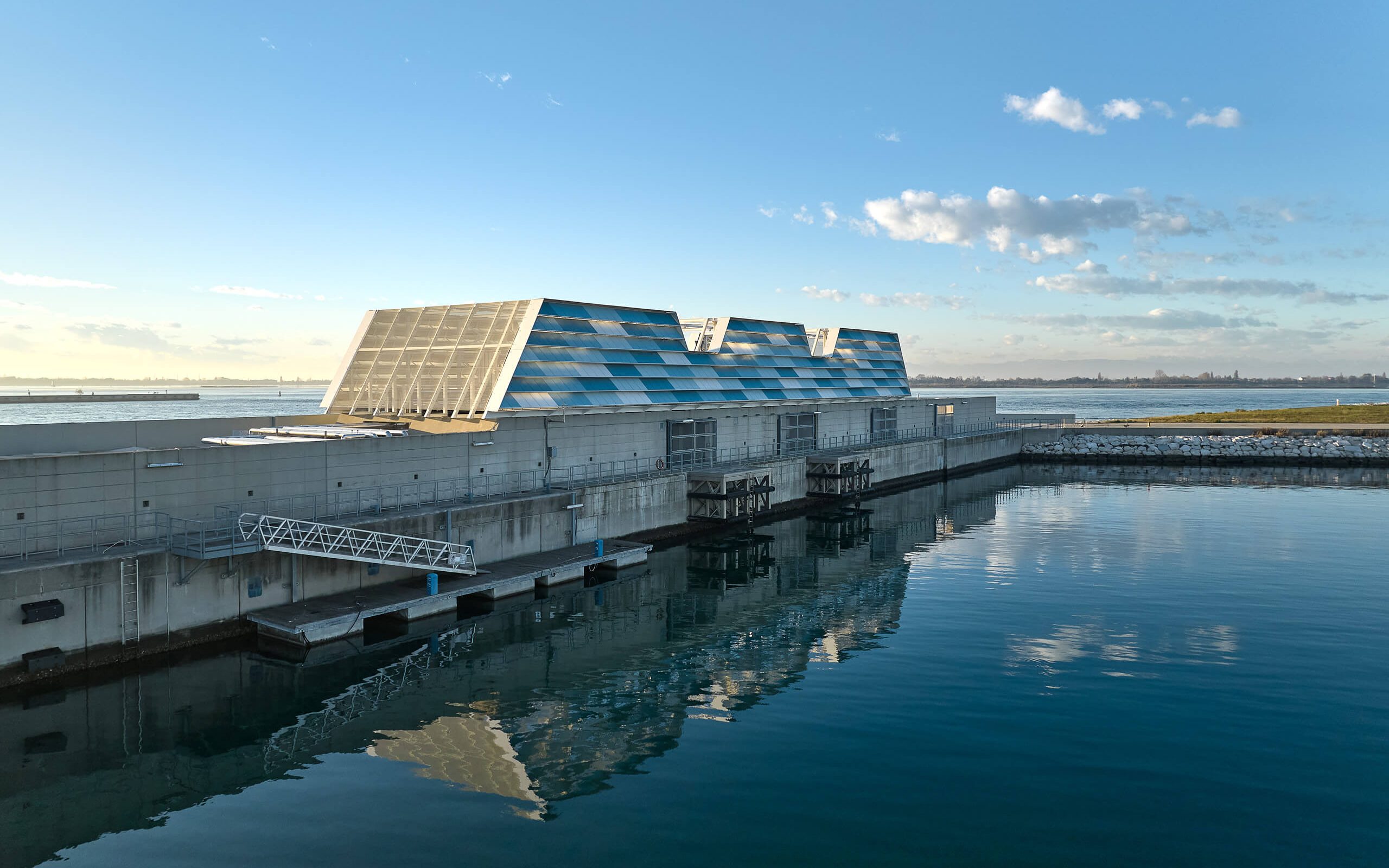
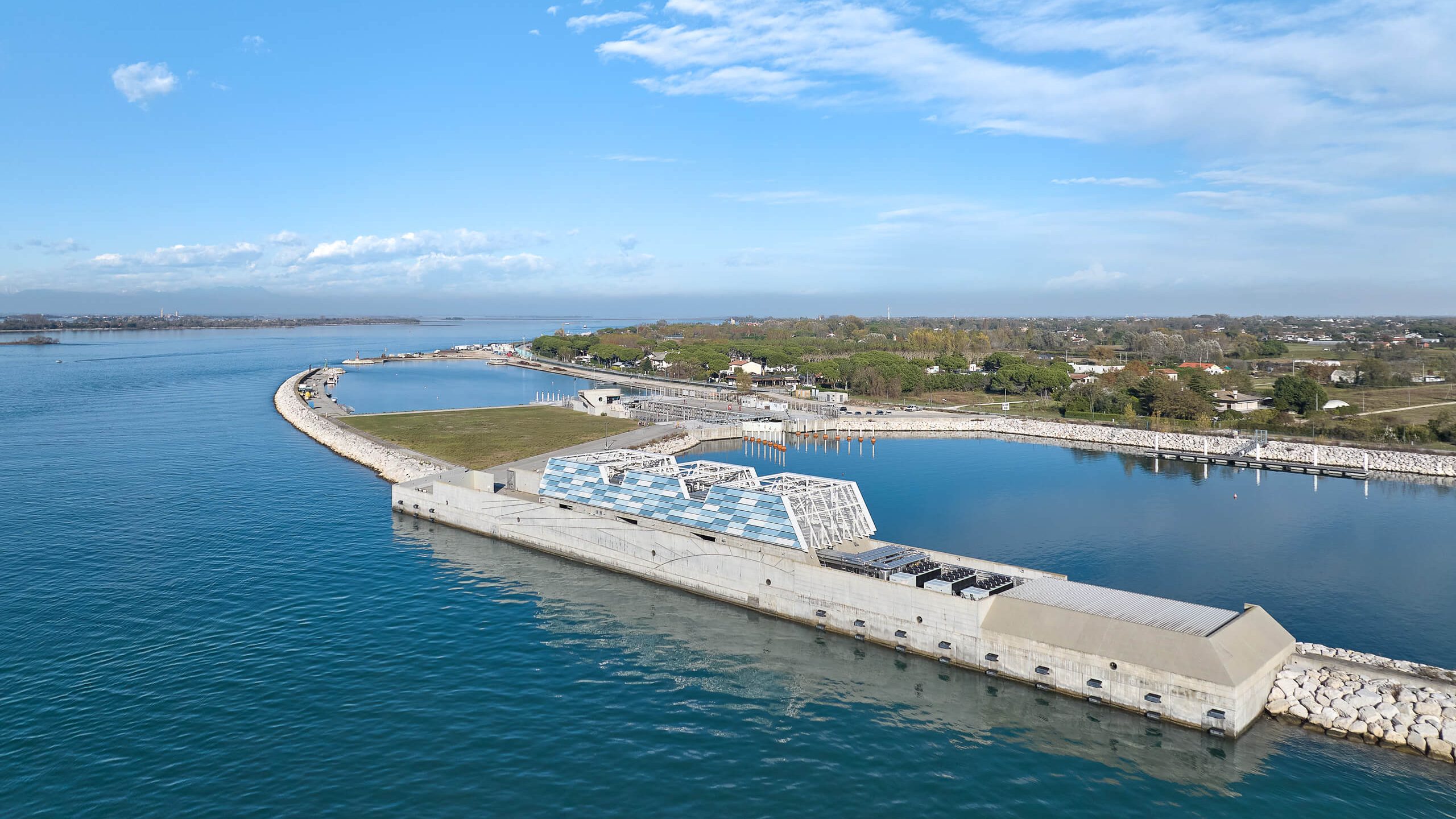
At the Venice Lido inlet, the widest in the Lagoon, with two canals of different depths, the MOSE system has two rows of mobile gates: one on the Treporti canal to the north, with twenty-one gates for a total length of 420 m, and one on the San Nicolò canal to the south, with twenty gates for a total length of 400 m. At the centre of the inlet, an artificial island was built, hosting technical buildings and installations for the general functionality of the complex MOSE system, which serves as an intermediate element between the two rows of gates.
As part of the project’s architectural and landscape integration program, the 3,000 sqm ceramic façade cladding masking these four independent buildings, which house all the technical ventilation systems of the submarine tunnels, was carried out by MATE Engineering, under the supervision of Professor Carlo Magnani, former Rector of the IUAV University, for the architectural part, and by the Venice-based company THETIS for the structural part.
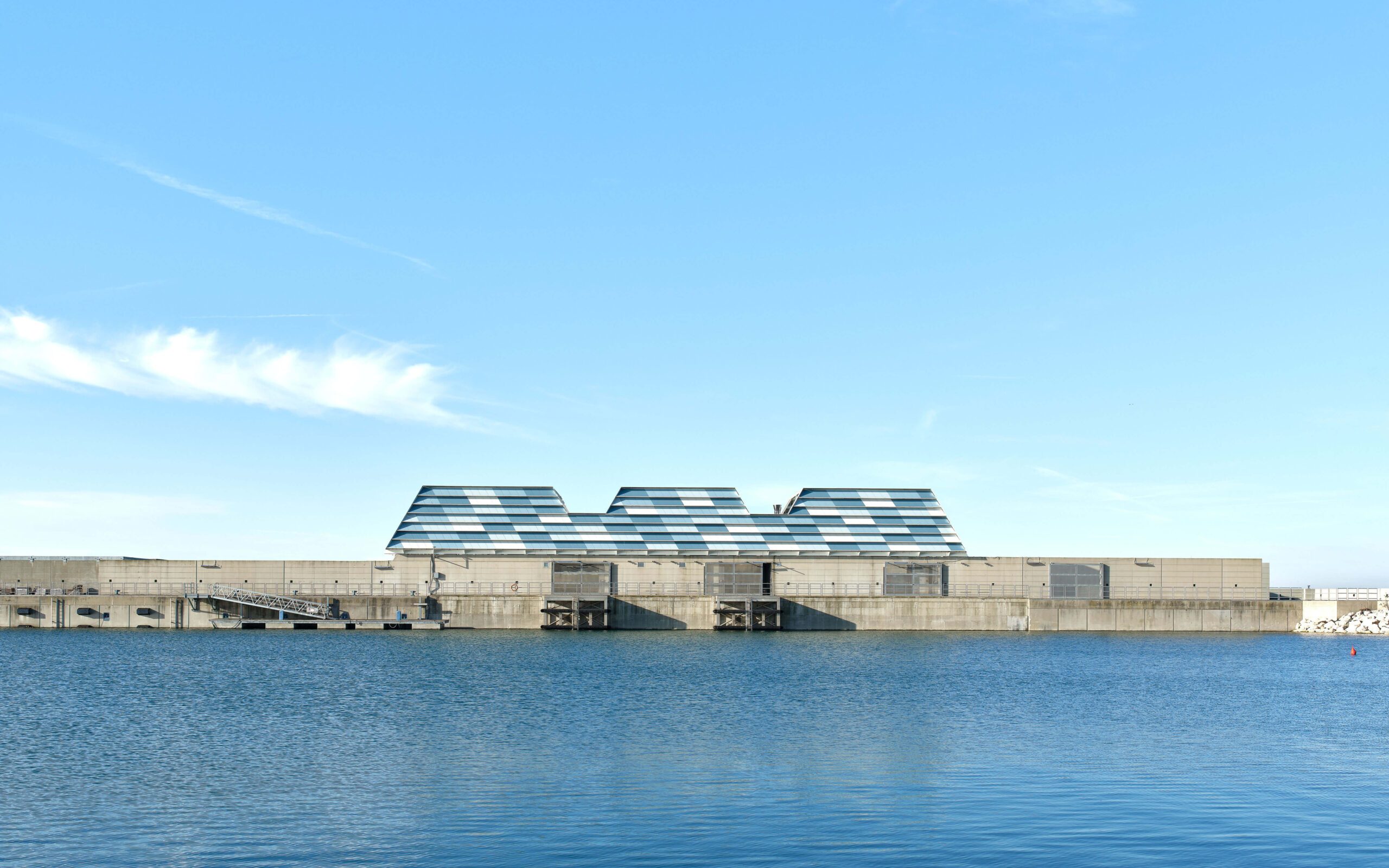
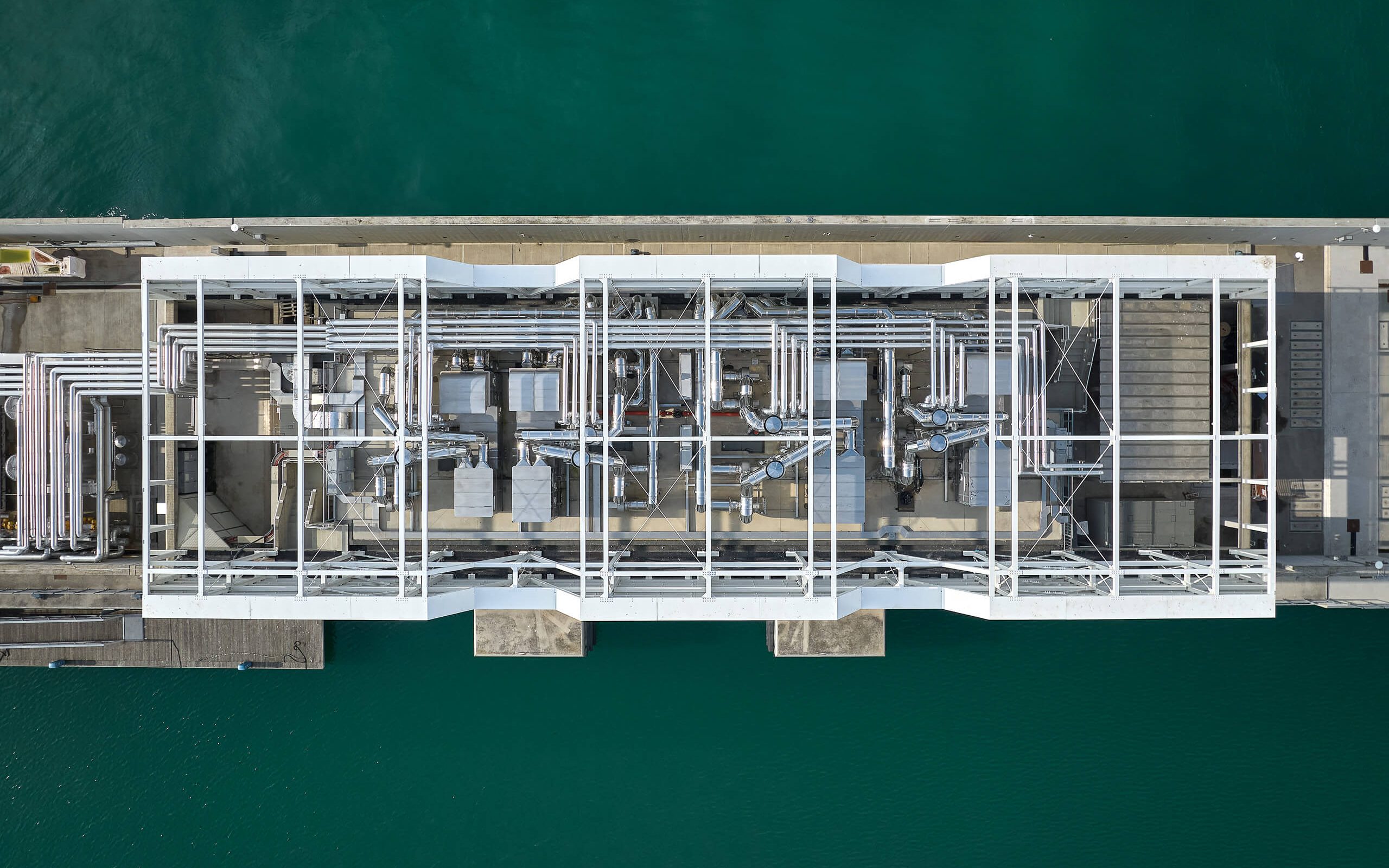
- Architect: MATE Engineering + THETIS
- Location: Venice, Italy
- Photography: Federico Covre
- Year: 2023
